#global television network
Text
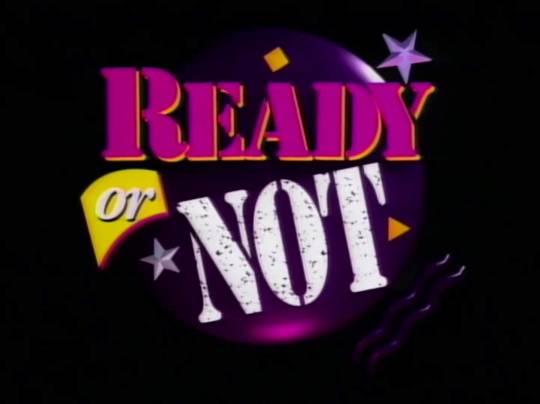
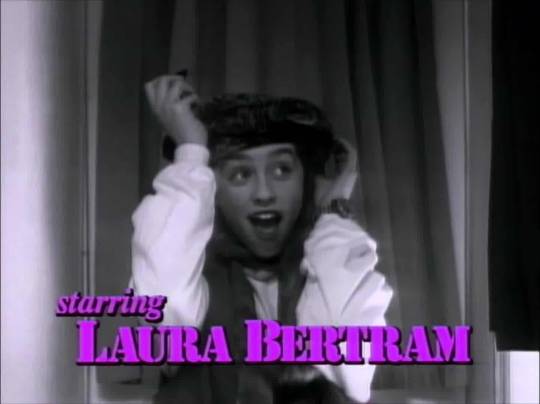
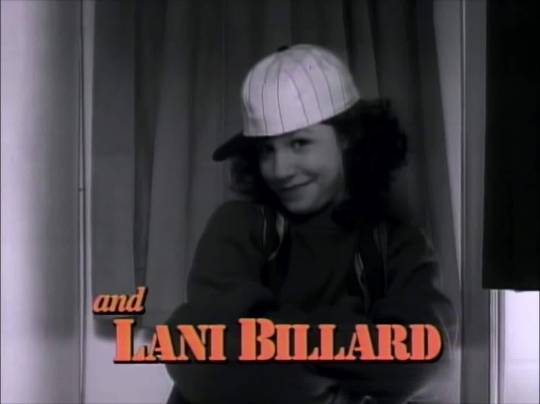
Ready or Not - HBO / Global Television Network - April 3, 1993 - 1997
Teen Drama (65 episodes)
Running Time: 30 minutes
Stars:
Laura Bertram as Amanda Zimm
Lani Billard as Elizabeth "Busy" Ramone
Gail Kerbel as Phyllis Zimm
John Lefebvre as Leonard Zimm
Diana Reis as Lucy Ramone
Gerry Mendicino as Sam Ramone
Joseph Griffin as Manuel "Manny" Ramone
Fab Filippo as Dominick "Dom" Ramone (main, seasons 1–3; guest, season 5)
Noah Plener as Francis "Frankie" Ramone
Recurring
Benjamin Plener as Michael "Monkey Ears"
Amy Smith as Chrissy Frazer (seasons 1–2)
Jesse Nilsson as Justin (season 1)
Omari Moore as Troy Edwards (seasons 1–2)
Keram Malicki-Sanchez as "The Lizard", aka. "The Liz" (seasons 1, 3–4)
Keith White as Petrocelli (seasons 1, 3–4)
Karl Pruner as Stephen Bennett (season 1)
Ross Hull as Danny Masters (seasons 2–3)
Amos Crawley as Bernie Sagittarius "Sag" Chearney (seasons 3–4)
Ryan Gosling as Matt Kalinsky (season 4)
Jason Deline as Ernie Lipnit (season 4)
Tamara Podemski as Carla (seasons 4–5)
Kari Matchett as Sheila Ramone (seasons 4–5)
Daniel Enright as Milan (season 5)
3 notes
·
View notes
Text
You guys you guys you guys! Train 48 is on Amazon Canada!
2 notes
·
View notes
Text
First logos of the Big Four US TV networks




Status Post #10986: NBC, CBS, ABC and Fox.
#nbc#cbs#abc tv#fox tv#national broadcasting company#columbia broadcasting system#american broadcasting company#fox broadcasting company#comcast#paramount global#the walt disney company#fox entertainment#1939#1941#1948#1986#big four tv networks#american television#us tv#big four
0 notes
Text
Since 2023, three articles have appeared in scientific journals, with 45 authors in all, arguing that the claims made on behalf of the wood-wide web have far outstripped the evidence. The objections are numerous. Many studies of inter-tree transfers have found only minuscule amounts of sugars shuttling between the trees – “statistically significant” but not necessarily “biologically significant”, one group of authors says – and most don’t rule out the possibility that the resources travelled through the air or soil rather than fungally. Despite Wohlleben’s insistence in Hidden Life that in a mycorrhizally conjoined forest “it is not possible for trees to grow too close to each other”, studies have not generally shown that seedlings ensconced in fungal networks do better when close to older trees (they often do worse). And although many trees are colonised by mycorrhizae, there is debate about whether those mycorrhizae actually form a durable network through which nutrients and signals could pass.
Nature, the original venue for Simard’s research, recently ran an explosive news feature by Aisling Irwin on the “groundswell of unease” among ecologists with public discussions of mycorrhizal networks. Irwin reports on the scientists’ general scepticism and on a particular episode that has raised concerns. In her memoirs, Simard makes much of the idea that “mother trees” favour their kin. She describes in detail field research by her graduate student showing that seedlings placed in a fungal network “survived better and were noticeably bigger” if they were genetically related to nearby older trees. But that field study, the critics have noted, actually showed the opposite: the related seedlings were likelier to die, though the trend was not statistically significant. (Simard says that other studies by the student, from the laboratory, support her claims and she’d merely made a narrative choice to describe the results as emanating from the forest. “I do not, and would never, imply anything misleading when presenting research,” she told Irwin.)
What makes the recent criticisms of Simard’s work so striking is that some come from her former colleagues and admirers. The first critical review of evidence was by three scientists – Justine Karst, Melanie Jones and Jason Hoeksema – who had all co-authored papers with Simard. The lead author, Karst, has discussed how she was inspired by Simard’s research to become a mycorrhizal ecologist. The second, Melanie Jones, appears in Simard’s memoirs as a hero who supported Simard when few others would. Jones co-authored the 1997 “wood-wide web” article, though she no longer stands fully by it. It was the cultural obsession with intelligent trees, from television shows to airport books, that impelled Karst, Jones and Hoeksema to reconsider their own earlier work.
Simard, who is preparing detailed replies, regards these in-the-weeds debates as distracting from the urgent task of protecting forests. She has described the attention that Karst, Jones and Hoeksema’s criticisms have received as “an injustice to the whole world”. Perhaps, but it is exceedingly hard to read the recent reviews of evidence and retain faith in the wood-wide web as settled scientific fact.
“Why do we so badly want this to be true?” Karst has asked. Maybe the unrelenting news of global warming and its attendant catastrophes – wildfires, hurricanes – has driven readers for respite toward calmer environmental stories. Or perhaps recent political cruelties have led us to seek reassurance that, in nature, beings are thoughtful and kind. The connective aspect seems important, too, as if trees’ fungal friendships could release us from our phone-checking isolation. Fairly or not, we’ve loaded our aspirations on to the forest: be the tree you want to see in the world.
[...]
A tree, Farmer writes, is “a radically nonhuman thing”, and a large, old tree is especially one. If trees have conceptual value, it is not because their similarity to us elicits our sympathy, but because their difference from us enlarges our horizons. They are the most visible markers on the evolutionary road not taken. Trees stand in for all the photosynthesising, carbon-dioxide breathing, fixed-in-place species that share our world yet have fundamentally different ways of living in it.
Contemplating trees should be, above all, an exercise in humility. The mountains and woods, Santayana told his California audience, allow you to “take yourselves simply, humbly, for what you are, and to salute the wild, indifferent, non-censorious infinity of nature”. Perhaps the presence of beings older, larger and more numerous than we are – whether or not they resemble internet users or our mothers – can be a reminder that we are not everything, and that everything is not us. “Let us therefore be frankly human,” Santayana enjoined. And let the trees be trees.
119 notes
·
View notes
Text
Hot and Cold: Arrow 1x22 Review (Darkness of the Edge of Town)
There is no episode that exemplifies the disjointed nature of Season 1 more than “Darkness on the Edge of Town.” We have Exhibit A: an OTA field op and the smoaking hot chemistry of Stephen Amell and Emily Bett Rickards igniting in an elevator shaft of all places.
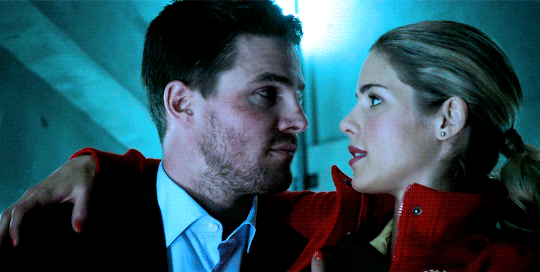
And Exhibit B: the other show. A frigid black hole I feared we’d never escape from.

Let’s dig in…
Olicity and OTA
Let’s start with the positive since there is soooooo much freaking positive! It can take time for a television series to find its footing in the first season. Unfortunately, nowadays if the audience isn’t binging the entire season in 24 hours, the show gets canceled. But blessedly, this was 2013. Network TV was still the supreme ruler, and Arrow was pulling big enough numbers for the CW to allow for some leeway.
Twenty two episodes of leeway. Arrow finally found its groove and latched on to the mystical “it factor” that keeps an audience watching - Oliver, Felicity and Diggle. The chemistry and dynamic between these characters and the actors who play them is undeniable and it creates an action packed, laughing out loud, and sizzling hot episode. The writers are having FUN in “Darkness on the Edge of Town" and it shows, which means we get to have fun too.

Oliver decides to question his mother regarding the Undertaking, but she refuses to confess. So, Oliver and Diggle take a more brutal approach. The Hood kidnaps them both and beats the crap out of Oliver until she coughs up the information. It’s always hilarious when this show acts like David Ramsey can fit in Stephen Amell’s suit.
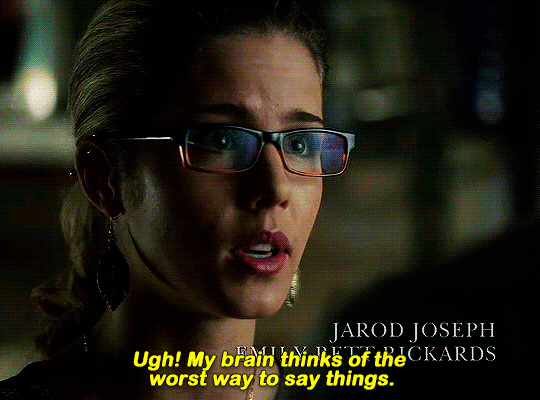
The burgeoning relationship between Oliver and Felicity is very much in its infancy. Oliver is fully in denial about feeling any type of way toward his IT girl. Never is that more apparent then when Oliver and Diggle return from the confrontation with Moira. Diggle gets a few solid whacks in, which I’m sure felt amazing given the absolute jackass Oliver was being the past few episodes.

Felicity has a much harder time concealing her feelings towards Oliver and it’s clear she worries about him. She is always the first to ask if he’s okay, offer a supportive ear to listen or shoulder to cry on. However, Oliver seems to draw a line in this episode when Felicity reaches to touch the bruise on his face. That small step was too much. He physically keeps her at arm’s length because the intimacy of Felicity’s concerned touch is not something Oliver is ready for. There is still a very big wall hiding all that pain, regret and unworthiness.

Source: @lyricalarrow
Admitting he remembers the exact day they met, however, is absolutely no problem. We shall come to discover just how much Oliver remembers about that day in later seasons. I have a lot of male friends and I guarantee you I don’t remember the day we met. However, the day I met my husband is burned into my memory.

The team determines the only way to stop Merlyn from leveling the Glades with a man-made earthquake machine is to find the location of the device. Unfortunately, Felicity is unable to hack Merlyn’s system so she needs direct access to his mainframe inside Merlyn Global Headquarters. LET'S DO CRIMES!
Oliver makes an appointment with Tommy (more on that later) while Felicity continues to up her adorability factor by dressing up as Big Belly Burger employee delivering lunch to a security guard otherwise known as John Diggle.
The burger is laced with benzodiazepine, so it knocks out the other security guard and gives John free reign to control the elevator & cameras. Do we know how Diggle is able to pose as a security guard? No. Do we care? Nope. Let the hijinks commence!
Oliver and Felicity make their way to the elevator, but not until Oliver unloads an unwelcomed dudebro hitting on Felicity.

Jealousy looks so good on him. The way Stephen Amell plays this scene, with his nails-on-a-chalkboard look at the word “sweetie” to robotically knocking the papers out of the elevator, is physical comedy at its best. Something Amell rarely gets to do, but he’s great at it.
The mainframe is on the twenty fifth floor, but the elevator only goes up to the nineteenth, so Oliver and Felicity have some climbing to do. It seems Felicity is thinking of a certain kind of climbing as well and really who can blame her?
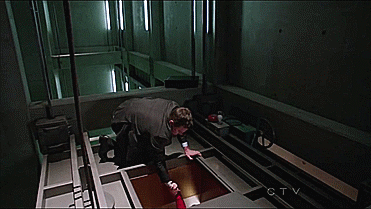
Source: @lyricalarrow
Oliver lifts her WITH ONE ARM out of the elevator, which is so freaking hot I cannot.
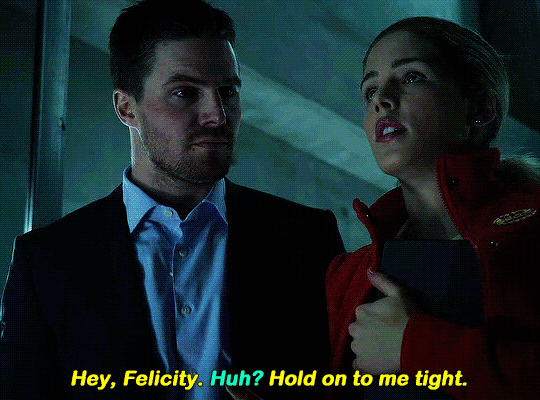
Then, very gently, bends down to wrap his arm around Felicity’s waist and loop her arm around his neck. Oliver is moving with the precision of a jungle cat, but it also feels like an incredibly elaborate way to grab hold of someone. It has a very superhero sweep-her-into-my-arms sensuality to it. The mission is giving Oliver plenty of reasons to touch Felicity and he doesn’t seem unhappy about it, particularly when he softly tells her, "Hold onto me tight."
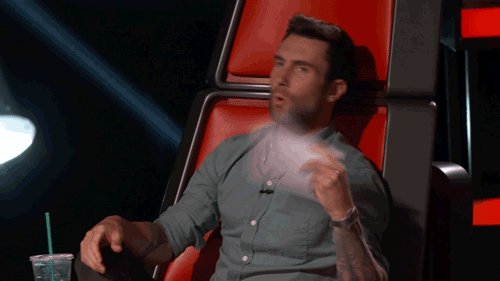
Is it warm in here? Holy Moses, Oliver Queen. Get control. This man is a god to women, so he clearly understands the connotations of, “Hold onto me tight.” There’s a thousand different ways to say that platonically, but nope! Oliver charges headlong into the blinking neon lights of SEXUAL INNNUENDO.

Felicity’s Freudian slip didn’t feel so Freudian either. She knew exactly what she was saying and leveled her full meaning in a single look. I thought the elevator was going to combust from all the heat. If you are looking for the text book definition of undressing someone with your eyes than look no further than these two. They way they hold the gaze. WOW. Can we have all the nakedness now?!!! It’s a sin against science for Oliver and Felicity not to bang regularly BECAUSE THE CHEMISTRY.
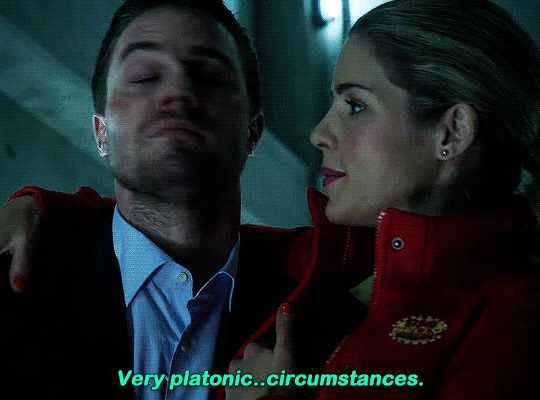
THIS IS NOT THE BEHAVIOR OF A MAN MADLY IN LOVE WITH LAUREL LANCE.
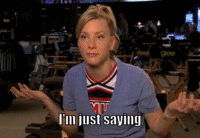
This scene has the classic Superman and Lois Lane feel to it.
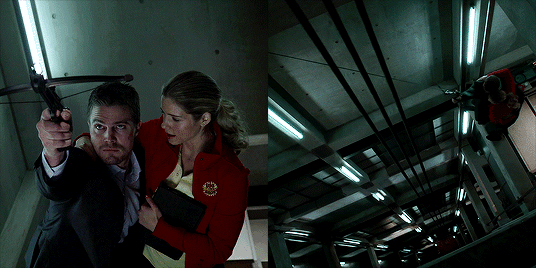
Source: @olicitygifs
Oliver is doing his vigilante thing, but his partner in crime isn’t the leading lady of Arrow. It’s a supporting character who’s feeling less and less supporting with each episode.
Unfortunately, Felicity is about to be discovered while Oliver is held up by Malcolm Merlyn, Thea and Roy Harper. This is a very popular day to visit Merlyn Global. Oliver’s frustration under his cool and calm exterior builds the tension nicely and we do wonder how Felicity is getting out of this jam. Never fear! It’s John Diggle to the rescue. Top notch comedy from both Rickards and Ramsey.

Source: @olicitygifs
Their first official team mission outside of the bunker is a wild success. Felicity still has to search through all of Merlyn’s data to determine the location of the device. Despite all the heat, hilarity and hijinks on this side of the show, Oliver makes an abrupt decision regarding the other side of the show that makes absolutely no sense.

Lauriver and Merlance
Still feeling warm friends? Well don’t worry. I have a nice bucket of ice cold water to dump on you.

As predicted, Oliver’s love confession messes with Laurel’s mind and obliterates any clear path back to Tommy. He drops this bomb on her and they have not spoken for a WEEK. Of course, this is all Laurel has thought about and she makes a rather elaborate speech admitting she has feelings for Oliver too.

Yeah, none of this is a surprise. Tommy knew Laurel had feelings for Oliver. We knew Laurel had feelings for Oliver. Hell, even Oliver knew. The only one who wasn’t admitting it was Laurel, so at least she’s finally being honest about things. You don���t get a love triangle if the central figure in the love triangle doesn’t have feelings for two people. The issue is who does Laurel love MORE.
Laurel: Maybe Tommy was right. Maybe he and I weren’t meant to be.
She had a clear answer last week. It was Tommy. She absolutely wanted to get back together with him, but Oliver decided honesty was the best policy on this one subject only. This line enrages me because Oliver has distracted Laurel from the man she is truly meant to be with. I will die on this hill, friends. DIE. ON. THIS. MERLANCE. HILL.
Laurel: Tommy’s a good guy. Are you?
Oliver: I didn’t have an agenda. I didn’t mean to make it more difficult to fix things with Tommy.
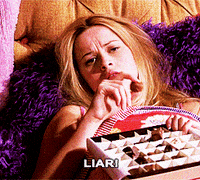
Oh for fucks sake. Yes, you did Oliver. That’s exactly why you said it. This is just a straight up lie. Oliver absolutely wanted to confuse Laurel. He just doesn’t want to look like the bad guy for doing it. This is some A+ Ollie behavior.
After Laurel makes a wonderfully impassioned and heartfelt speech about her feelings for Oliver, after probably obsessing about it for seven days straight, Oliver dumps her. AGAIN.
Oliver: Nothing’s changed. My life hasn’t changed. I haven’t changed.
I am infuriated on Laurel’s behalf with this flip flopping back and forth. The time to make this speech was last week in the hospital hallway. That was the moment to let her go and put Laurel on the plane with the man she belongs with, but Oliver couldn’t do it because it was too damn hard. It was just cruel and horribly unfair to both Tommy and Laurel because Oliver has absolutely no intention of being with her. But now it’s too late. The information is out there. You can’t put the toothpaste back in the tube, my dude.

Laurel pays her father a visit to basically get his permission to date Oliver again. Yeah, let’s make the man who lost his daughter to Oliver’s selfishness sign off on banging his other daughter again. This show.

Quentin’s speech is equally as empty as any speech Laurel’s made about seeing the change in Oliver because we, the audience, have not been privy to those moments. We’re just supposed to take their word for it even though the last time Quentin saw Oliver Queen he was trying to arrest him for drug trafficking. But sure, Quentin thinks he’s “changed.”

In order to make this storyline work, you have to give proper attention to the Lance family interacting with Oliver and the writers do not seem interested in doing that. All the important emotional growth takes place off screen and we’re supposed to accept it as fact because the characters tell us.
Meanwhile, they are organically growing the relationship Oliver has with Diggle, Felicity, hell even Roy! So we know the writers are capable of SHOWING these moments of character evolution. They just choose not to when it comes to the Lance family. It’s why the show feels so completely disjointed.
Oliver pays Tommy a visit and wants to have a chat.
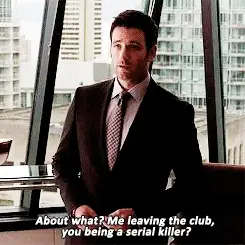
Source: @queensarrow
So it's safe to say Tommy is still pissed.
Oliver encourages him to work things out with Laurel – kind of?
Oliver: Lord knows, I am guilty of a lot of things between us, but not you are her.
What’s infuriating about this conversation is that Oliver still refuses to accept any kind of responsibility in their break up. Oliver pretends to be a friend to the all feminists and touts Laurel’s independence and free will. She makes her own choices and she chose Tommy.
Tommy’s point is clear, even if it is self pitying; Laurel is not dealing with all the information. If she did have all the information then she would choose Oliver. From Oliver’s standpoint, it doesn’t matter because he can’t be with her.
That’s not reassuring to Tommy nor is it supposed to be. If the elements keeping Oliver and Laurel apart were removed (the Hood) then Oliver wouldn’t think twice about making a move on Laurel. And Tommy knows this. These are not the actions of a best friend, which is why he’s so pissed.
Now, Tommy’s big mistake was throwing in the towel too early. He should have NEVER given Oliver an opening with Laurel, but he did and it set them on this path. No we have to watch it play out.
Oliver: I promised myself that when I crossed all of these names off the list, I’d be done, but taking down these people, it doesn’t honor him. I was just treating the symptoms while the disease festered. I stop the Undertaking… I wipe out the disease.
Diggle: What are you saying Oliver? You would hang up the Hood?
Oliver: Merlyn’s plan is what I returned from the island to stop.
Does anyone else have whiplash? Oliver does a complete about face and determines he can be with Laurel since he only needs to cross one name off the list instead of dozens. He’s just missing one step, gee what could it be? Oh! I know. OLIVER STILL HAS TO CROSS MERLYN’S NAME OFF THE LIST AND STOP THE UNDERTAKING. Talk about counting your chickens before their hatched.
A hero’s journey is a very specific type of story. Joseph Campbell outline seventeen stages in 1949 and Christopher Vogler created an updated version in 2007 for screenwriting. I’m not going through all seventeen steps, but we can skip to the very last one regarding this storyline.
Freedom to Live/Return with the Elixir – meaning the hero has faced their internal and external struggles, has conquered the demons around them and earned the right to live as they choose. From a spiritual sense, the hero lives without fear of death.
It’s similar with Vogler’s elixir stage. From a community perspective, the hero has found the magical way to heal their wounded land. They are bringing hope, life and freedom back to their loved ones. In doing so, it gives the hero a personal victory. They’ve earned the right to experience peace and joy, which can be represented in a wide variety of narratives.
Oliver is hero. Arrow has made his endgame very clear - save Starling City. Has he saved the city? Has he stopped Malcolm Merlyn? NO. So why is his leather clad ass running all the way back to Laurel Lance to enjoy the fruits an elixir he has yet to procure? If Laurel is endgame, this makes absolutely no sense. This is too fast. It’s too abrupt. It doesn’t feel earned because it hasn’t been earned.
Clearly, the initial plan was to put Oliver (Green Arrow) and Laurel (Black Canary) on parallel, if not intersecting, paths. I’m not saying Oliver cannot be with Laurel as they evolve into superheroes together. But this is the first freaking season you guys! He hasn’t done a damn thing yet! Neither has she. And yet, here Oliver is, knocking on Laurel’s door, looking for some fruit.
Oliver: Ever since I’ve been back, we’ve been doing this dance. We come together and then I pull away. Something pulls me away, but I think finally that something might be over.
Laurel: What are you are trying saying?
Oliver: That you know me better than anyone. And that you are more important to me than anyone. I just hope I didn’t wait too long to say it.
If Laurel has no clue Oliver is the Hood then can he really claim she knows him best? It sounds good to say, and probably what Laurel is dying to hear, but it rings hollow because there’s no evidence of this anywhere on the show. Laurel was wrong about who Oliver is all season. We are just supposed to accept some verbal acknowledgment of change, that she knows him better than anyone, but without any television scenes to back it up. That’s not how storytelling works, Arrow writers.
Sorry to beat a dead horse, but I warned you I wasn’t done with this topic - Oliver is still lying to Laurel. There should be more talking. What are those things pulling you away, Oliver? Why are they over? Are you a hooded, crime fighting, serial killer who has been mysteriously stalking me all year? Those are just some ideas off the top of my head. There is no person on this planet that Oliver needs an honest conversation with more than Laurel Lance, but nope. They jump straight to sex.
Let’s talk about the sex. This has been built up all season. These two characters belong together. They are bulldozing over Tommy Merlyn to be together because they are this passionate romance that time cannot quell. It should be like the fourth of July in Laurel’s apartment right now.

Source: laurelscanary
Instead, of heat we get frigid. Fish have hotter sex.

I’m willing to acknowledge "Radioactive" was the hit song of 2013 and every show on the CW was using it. It has a very sexy beat and big crescendo. It sounds like a good song to use during a sex scene.
Except for the fact that it’s called RADIOACTIVE with lyrics like, “This is it, the apocalypse.” This is not the romance your Plan A couple usually requires in a scene like this. They had Blake Neely for a composer. Where’s Oliver and Laurel’s love theme? We'll probably get it in the season finale but anything would be better than "Radioactive."

Source: laurelscanary
Next issue. Black socks and jean shorts? Wardrobe – what were you thinking? Nobody felt the need to tell Katie to take off the sox? Details matter!!

Source: laurelscanary
Stephen Amell and Katie Cassidy kissing are like watching two pieces of flat cardboard trying to hump each other. Can they choose a direction? Are we biting or no biting? Are we using tongue or no tongue? Can Oliver unbutton his shirt or does Laurel need to help? Is Oliver going to drop Laurel while trying to get her sweatshirt off? It was just so awkward from start to finish. ZERO SPARKS.

Source: habibialkaysani
And for the coup de grace, they leave the curtains pulled wide open, so Tommy can see them screwing from the street. The look of utter devastation on his face is heartbreaking and that’s the final image they leave us with as their love scene fades to black. Oliver and Laurel reuniting are not framed as a good thing. It’s framed as a betrayal, because that’s exactly what it is.
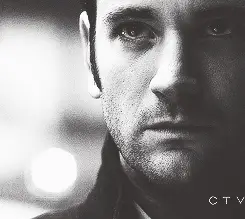
Source: @queensarrow
Even worse, Felicity finds the device while Oliver and Laurel are asleep and HE LEAVES. No note. No, honey I have to run out and save the city real quick, but I’ll be back for round two later. Nothing. But please, tell me again how much Ollie has changed.
When I watched this episode live I was horribly disappointed the big reunion with Laurel and Oliver fell flat. This was really my last gasp trying to be a Lauriver shipper. And I use the term “trying” loosely. I was more or less looking for any redeeming qualities in this love story, but after this hypothermic love scene I was officially out. I could not ship these two. I could never forgive them for betraying Tommy. But I feared Arrow would never move on from Oliver and Laurel.
Of course, their real intention becomes all too clear later. Arrow was trying to blow them up to make way for something infinitely better.
Theroy
Speaking of flipping back and forth, these two break up every other week. Roy is clearly committed to finding the Vigilante, which leads them to Merlyn Global and a run in with Oliver, the disapproving older brother. Again, Stephen Amell’s acting is superb.
I loved the way he said “What” to Thea and the firm alpha male handshake he gives Roy, warning him to stay away.
Obviously, Roy accomplished his goal. He found the Vigilante. Roy just doesn’t know it. He thinks Oliver Queen is too much of a wimp to ever consider him as the man in the hood. Thea was good and ticked off with that “wimp” remark. Enough to dump Roy. She will not tolerate any slander of her brother. #QUEENSIBILINGSFOREVER
But this is like the fifth time these two broke up, so it’s losing the impact. This isn’t all about the Hood’s identity and thanking him for saving Roy’s life. He wants to BE the Hood, so Roy can protect the people he loves and never lose anyone again. The question is – who did Roy lose? Unfortunately, Thea storms out before we get an answer, but hopefully one is coming in the season finale. (No I do not remember who).
Long story short, yes I like these two, but the faster the Arrow writers move the characters into the Hood storyline the better. Otherwise they are just marooned on their own show like Laurel Lance Island.
Stray Thoughts
Yao Fei died! It’s so sad and traumatic. I forgot he’s shot in the head. Really didn’t need to see that twice.
Fyers is shooting down a commercial airliner to destabilize the Chinese economy. It’s always about money for these assholes.
Walter wants a divorce and I would say their differences are irreconcilable. Moira is getting what she deserves. You can’t kidnap your husband for six months and then offer him tea and crumpets when he comes home.
"Who the hell is Felicity Smoak?" Uh oh. Quentin has Felicity’s name. That ain’t good.
“Is the other archer working for Merlyn?” Please don’t make Diggle look this dumb again.
Merlyn versus Oliver battle was EPIC! The fight scenes this season are so stellar.
“Psychopaths are color coding themselves. That’s helpful.” HA!
Listen to the Watchover podcast reaction to 1x22!!!
If you’d like to support the blog, please buy me a cup of tea!
Disclaimer: Any gifs on the blog are not mine. If you would like a gif removed from my reviews, please message me!
#arrow#arrow 1x22#olicity#anti lauriver#arrow reviews#anti laurel lance#tommy merlyn#ota#john diggle#felicity smoak#oliver queen#arrow episode review#arrow episode reviews#olicity fandom#watchover#watchover podcast#watchover with jen and calli#arrow rewatch#season 1 episode review#season 1 episode reviews
56 notes
·
View notes
Text
#K5NewsFMExclusive: A Dark and Dramatic Conclusion as the 4th Season of Wakfu will be the Last Season of its historic French cartoon series (updated as FINAL!!!)
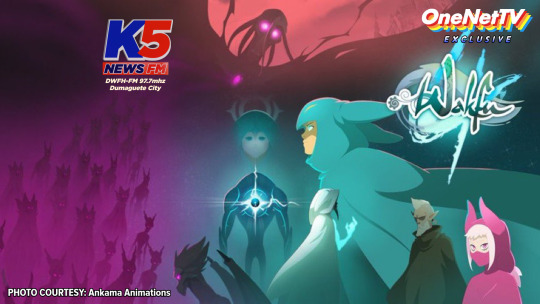
(Written by Rhayniel Saldasal Calimpong / Freelanced News Reporter and Presenter of OneNETnews)
ROUBAIX, FRANCE -- The upcoming Season Premiere of Wakfu, which will air on the 'Okoo' kids and teens programming block through French public broadcaster 'France Televisions' is set to be a dramatic heartstopping conclusion. This will mark the beginning of the show's 4th and Final Season, scheduled to debut in early mid-February 2024. It is worth mentioning to recall that the entire production at Ankama Studios in France has been successfully concluded, thanks to the global campaign fund of Kickstarter that took place in late-June 2020.

(PRESS RELEASE OBTAINED by K5 News FM Dumaguete)
Per the press release exclusively obtained through DWFH-FM 97.7mhz's K5 News FM, the latest synopsis for the final season of a French cartoon show portrays intense and potentially darker scenes that comes up a bit close to happen: "After their destructive battle with Oropo, but also with their own demons, Yugo the Eliatrope and his friends find themselves at the gates of Ingloriom, the realm of the Gods. The Tofu Brotherhood (TFB) has no time to wonder what fate the 12 Divinities have in store for them for this sacrilege: the floating territory is devastated!".
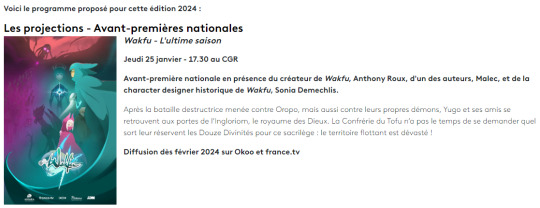

(SCREENGRAB COURTESY: FranceTVPro website)

(PHOTO COURTESY: Google Images)
Before an actual final season premiere on a national French television, a sneak preview in the panel is yet to be shown in-person at the Angoulême International Comics Festival (AICF) on Thursday late-afternoon (January 25th, 2024 at 5:30pm -- France local time).

(PHOTO COURTESY: AICF via X Network's FranceTVPro)
Inside a panel in Angoulême City, the said country, will discuss about the upcoming 4th and Final Season of the show, in the presence of Wakfu show creator named Anthony "Tot" Roux, one of the authors with French YouTuber personality (Malec) and Wakfu's historical Character Designer (Sonia Demechlis).
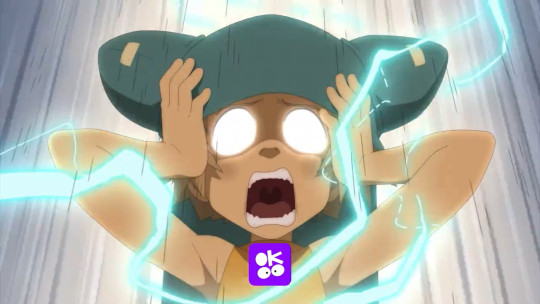
(SCREENGRAB COURTESY: Okoo / France Televisions / Ankama Animation via The X Network)
In a televised trailer 'X Network' (formerly Twitter) released Tuesday afternoon (January 16th, 2024), the heroes of the Brotherhood of the Tofu, Yugo the Eliatrope, Prncs. Amalia Sheran Sharm, Ms. Evangelyne the Cra, Mr. Ruel Stroud and among others have fought against formidable enemies and ancient evils. But sadly, things are gone crazier and darker situations as the fate of 'The World of 12' rests on their shoulders.
K5 News FM learns exclusively that the runtime for this 4th Season of Wakfu is 22 minutes long, with a final 13 new episodes.
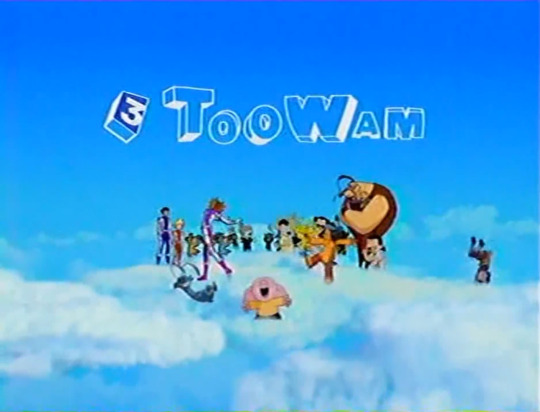
(FILE SCREENGRAB COURTESY: Generation TV_FR via YT VIDEO)
French cartoon show of Wakfu was started in the late-October 2008 during France 3's kids programming block "Toowam", before transitioning to Ludo (home of between Wakfu on the said date of 2008 and LoliRock in the late mid-October 2014).

(FILE PHOTO COURTESY for REPRESENTATION: Zodiak Kids and Family for Banijay & Ankama Studios / Editing Provided by the Anonymous Artists, and from the top left to the bottom right: Lyna, Carrisa, Talia, Iris, Aurianna, Evangelyne, Yugo the Eliatrope, Prncs. Amalia Sheran Sharm)
At the time of the writing with a confirmation from Ankama Studios and Zodiak Kids & Family (part of Banijay Group), theories in French kids cartoon suggest between LoliRock and Wakfu will not be planning to do a crossover episode for now, in and outside of this same public broadcasting network on Wakfu's final season for France Televisions.
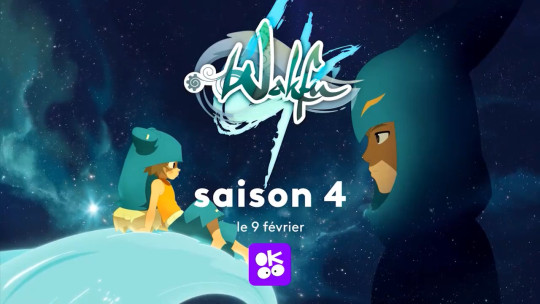
As reported exclusively between AnimeTVFrance news bureau (via The X Network) and Ankama News (also via the press release division of Wakfu), we do know that the new episodes to be aired back-2-back on primetime until early mid-March 2024.
With this, you can catch LIVE new episodes of the final 4th Season of Wakfu, premieres February 9th, 2024 at 1:30pm Eastern / 12:30pm Central (in the United States) / 7:30pm in France -- only on France 4's Okoo programming block and streaming LIVE via the France TV website, Animation Digital Network (ADN) and on the Okoo app for Google Play and Apple App Stores in France.
PHOTO COURTESY: Ankama Animations
SOURCE:
*https://www.francetvpro.fr/contenu-de-presse/64569626 [Referenced Event Listings via FranceTVPro]
*https://www.youtube.com/@malec3821 [Referenced YT Home Page via Malec]
*https://en.wikipedia.org/wiki/Angoul%C3%AAme_International_Comics_Festival
*https://www.francetvpro.fr/contenu-de-presse/64684101 [Referenced PR News Article via FranceTVPro]
*https://twitter.com/Totankama/status/1736789152455131477 [Referenced X Network Captioned VIDEO via Totankama]
*https://twitter.com/francetvslash/status/1744403591736050165 [Referenced X Network Captioned VIDEO #1 via FranceTVSlash]
*https://twitter.com/francetvslash/status/1747280767598641312 [Referenced X Network Captioned VIDEO #2f via FranceTVSlash]
*https://fr.wikipedia.org/wiki/Toowam
*https://fr.wikipedia.org/wiki/LoliRock
*https://www.banijaykidsandfamily.com/shows/lolirock/ [Referenced Show Biography via Banijay Kids and Family website]
*https://fr.wikipedia.org/wiki/Saison_4_de_Wakfu
*https://fr.wikipedia.org/wiki/Wakfu_(s%C3%A9rie_t%C3%A9l%C3%A9vis%C3%A9e_d%27animation)
*https://www.youtube.com/watch?v=HjWsaz7gxI4 [Referenced YT VIDEO via Kass Koui]
*https://www.youtube.com/watch?v=J_7yLJQZ6JA [Referenced Classic YT Video via Generation TV_FR]
*https://twitter.com/francetvpro/status/1750584660021666155 [Referenced X Network Captioned PHOTO via FranceTVPro]
*https://www.wakfu.com/en/mmorpg/news/announcements/1680321-wakfu-s4-soon-available-viewing [Referenced News Article via Ankama News for Wakfu PR Division]
*https://www.france.tv/france-3/wakfu/saison-4/5698308-wakfu-saison-4-des-le-9-fevrier-sur-okoo-et-france-tv.html [Reference News Article via France 3 Info]
and
*https://twitter.com/animetv_fr/status/1754591809651507421 [Referenced X Network Post via AnimeTVFrance News Bureau]
-- OneNETnews Team
#k5 news fm#entertainment news#roubaix#france#wakfu#season 4#saison 4#the final season#cartoon#french#fyp#ankama#awareness#exclusive#first and exclusive#OneNETnews
25 notes
·
View notes
Text
When one union succeeds, workers around the world can succeed more. Together, everyone everywhere can work to make things better.
Everyone who makes film and TV, everywhere, deserves fair pay and good working conditions. This year we set the tone, next year we bring it home.
“The Brussels-based FIA [International Federation of Actors/La Fédération Internationale des Acteurs], which represents hundreds of thousands of performers from around 90 member organisations in more than 60 countries, said the deal ‘establishes a landmark standard that will have a lasting impact across generations, particularly with respect to how actors are to be rewarded for the streaming of their performances and protected against the abusive use of AI.’”
���Many unions and their countries’ networks and streamers are having similar discussions over residuals, AI and other issues, and the U.S. agreement is widely seen as a blueprint to take forwards”
“‘We are immensely proud of SAG-AFTRA for taking on this incredible fight for all performers around the world’, said FIA President Gabrielle Carteris. ‘Streaming and AI are global realities within our industry affecting the future of work and our ability as actors to earn a meaningful living wage. We applaud the courage of SAG-AFTRA members and their leadership for standing strong throughout this historic fight. This agreement proves that actors, when using their collective voice and standing as one, have the power to transform and elevate this industry into a fair and equitable place. Strength in unity.’”
“FIA General Secretary Dominick Luquer said FIA members had ‘rallied with SAG-AFTRA, standing firm despite the strike’s fallout in their respective countries.’”
#ActorsStrike #SAGAFTRAStrike #SAGAFTRAstrong #UnionStrong #u1 #movies #tv #film #television #entertainment
#actors#actors strike#sag aftra solidarity#sag aftra strong#sag aftra strike#sag aftra#sag strike#union strong#labor unions#movies#tv#film#television#workers#strike#contracts#ai#streaming
23 notes
·
View notes
Text
Lili Reinhart - Grazia Italia Interview

In the cult TV series Riverdale we met her as an always fearless heroine, often forced to confront others and with herself. But even in real life American actress Lili Reinhart, 26, has often found herself having to look within to overcome difficulties.
At 14, when she was already determined to pursue a career in acting, she was diagnosed with a form of depression. Very young, she went through anxiety attacks and various kinds of difficulties, not least that body dysmorphic disorder that leads her to see herself differently from others and to suffer from some physical characteristics that she perceives in a distorted way.
Reinhart has therefore become the champion of the battles for mental health and for the acceptance of different types of beauty. She didn't hesitate to expose herself even to a global celebrity like the queen of social networks Kim Kardashian: the actress found that losing so much weight and in a short time to get into a dress that belonged to Marilyn Monroe was not a good example for her women who have difficulty accepting their body.
At the Women in Film Gala 2022, Lili then received the Max Mara Face of the Future award, dedicated to emerging actresses. «My family», declared Maria Giulia Prezioso Maramotti, «has built a company that honors and celebrates women, above all in the arts. We wanted to award the prize to a young artist who embodies our values, but who is still evolving. What Lili is going in is an excellent direction to follow.
I meet Reinhart in Los Angeles, while she's curled up in the make-up artist's chair for Grazia's fashion shoot that you see in these pages. She remains seated for a long time with her legs pulled up to her chest, a position that evokes the tenderness of a little girl. But she talks to me about serious topics and does it with honesty and depth, even when it comes to revealing the most intimate aspects of her life. She became a global celebrity thanks to the character of Betty Cooper in the TV series Riverdale, which reached its seventh season.
Do vou ever think that the success of this role has somehow slowed down your career as an actress?
I am grateful to Riverdale for everything it has brought me. If I'm sitting here with her now, it's because of the success of the show. But at some point in life, it's time to move on."
Do you feel that you have something to prove to others or to yourself?
I've been acting since I was 12, l've come a long way since then, but I think I haven't yet fulfilled my potential. And this is a challenge for myself. I want the actors who inspire me to talk about me, I want to go far and deserve it. For the past seven years, I've been doing a teen show, Riverdale, with a style that isn't necessarily. what i prefer. But Riverdale it has been incredibly successful and takes up practically all my time, so it has been difficult for me to seize other opportunities
Have you had to make many job cuts?
Last spring I was offered a role that I wanted to play with all my heart, but unfortunately the dates did not reconcile with the filming of the show. It was devastating to say no.
What was she like as a child? Did you imagine that when you grew up?
| was an introvert, I lived in my own little world and I always felt a bit isolated. I think I have an old soul, with my peers I felt like a fish out of water and I didn't quite understand which was the right place for me. Just yesterday I was talking to my mother about when I enjoyed dressing up as a child. We had a box full of costumes we'd collected over the years, I even changed three times a day. I put on plays and plays for my family, I always wanted to perform. So, in the end, I moved on to the theater up to television and cinema.
Was performing a way of expressing yourself?
Some people are naturally outgoing, funny. I felt I could only be by performing. I was very insecure and acting gave me the opportunity to explore sides of my personality that I would not have known otherwise.
And i also brought out a very intimate and vulnerable side by writing a book of poems, Swimming Lessons: Poems ("Swimming lessons: poems").
Yes, it was a time in my life when I felt like I wanted to. to do something that came exclusively from me and over which I had total creative control. I was very nervous at first, because it was a bit like sharing a diary with people who were ready to judge it and judge me. As an actress I feel safe, as a writer I don't: hence the negative comments on mine. book strengthened my fears. I know that no one would have paid attention to my poems if Lili the actress hadn't signed them, but I never had the claim. to establish myself as a writer. I'm a romantic and I just wanted to share a different side of me.
Don't you think maybe you're too hard on yourself?
I internalize a lot, especially the criticisms. After all, poetry is the way I express my emotions. What I wanted to convey was not, "Look at me, I'm a writer." | wanted to tell the people who follow me that I am an absolutely normal human being: I have feelings, insecurities, I struggle and face life's challenges just like anyone else.
She has often spoken about her insecurities, especially physical ones, and is a spokesperson for the "body positivity" for the acceptance of all physicalities. Do you remember the first time dysmorphia, a disorder you suffer from,presented itself?
I have an average build and, when I began to get to know the world of fashion and clothes better, I met models with very different physiques from mine. There have been times when the clothes they offered just didn't fit me. So I said to myself: "Why don't I have a smaller physique?". When a dress designed for someone two sizes smaller than you doesn't fit, you start to think you're wrong and you have to do something to fit the clothes. But in a young woman these thoughts can hurt a lot.
I recently Today, however, she sees her photos everywhere. What does it feel? She likes herself?
I talked about this with my therapist. In fact, I feel like i live in a sort of perpetual comparison with other, more glamorous versions of myself. I started acting as a child and learned that my body is always changing. Today I accept myself more and judge myself less, however Hollywood doesn't want you to get old and puts pressure on you for it. Don't you think it's crazy that at 26 | worry about not having the same face as when I was 19? Of course I don't have it! Even the one in these photos is certainly a more beautiful version of me: I'm not like this every day. Constantly having to show a better image of ourselves can play tricks on us, because it can make us believe that our everyday version is not enough.
And how does she find a way to get everyone along these versions of itself?
I can't, they don't get along. There is my everyday self that reminds Lili of the glamor that looks like this only if she is surrounded by professionals who they make up and comb her hair. But I'm making peace with the fact that first I have to learn to be okay with each version of me. For example, I now have an acne breakout. Who sees them? Acne has always triggered severe mental and emotional distress in me. It makes me feel bad and makes it difficult for me to appear in public or take pictures without makeup because I know my skin would otherwise look different than everyone expects. Instead I should think that a rash doesn't take anything away from me, it doesn't define me. It's always me. Unfortunately it's a constant struggle: I live in a world that demands perfection and, at times, I think I've begun to demand it too. But then I think that everything happens for a reason and maybe the reason why acne always shows up on my face is because I have to learn to love every season my skin and my body go through because that's right. I'm a human being, not a mannequin.
I couldn't help but notice the tattoo on her right forearm: an arrow.
I did it around 18, 19. It represents my battle against depression: an arrow can only go forward if it is first pulled back. It's like saying that, once you hit rock bottom, you can only go back up.
In which direction is it pointing then?
Forward, always. My mental health has its ups and downs and this arrow reminds me that I always manage to get out of it, because I'm a tireless fighter.
But, during this fight, I hope she takes moments to appreciate what she has achieved.
I appreciate my battles, it is thanks to them that I am such a strong person. I wouldn't change anything about me. Having had the experience of depression leads me to experience moments of joy more intensely and makes me establish healthier and deeper relationships. The moments of discouragement have taught me so much about myself and it is right that I experience them and face them when they arise, rather than trying to escape.
She was cast as the Max Mara Face of the Future. How does this recognition make you feel?
It's a complicated feeling to explain. It's hard for me to accept that people see me this way. I almost feel like I have imposter syndrome, because I don't think I've shown my worth as an actress yet. I have exposed myself as an activist for body positivity and mental health, but in my work I think I haven't given my best yet. I'm waiting for that opportunity, which is on the horizon, but l'm waiting. So to receive the award before I've even been able to demonstrate what I think I can do as an actress is very encouraging. And I'm grateful because this recognition makes me understand that l'm already doing something good.
-Credit to lililovebots on Twitter for posting the interview.
89 notes
·
View notes
Text
With the CW network canceling almost all scripted shows on its network, many great shows have been canceled or are facing the threat of cancellation. Gotham Knights is potentially one of the shows that unfortunately, could share this same fate.
Many fans all over the world support Gotham Knights and would love to see it continued for more seasons! Gotham Knights has an immense following all around the world. The show has been a massive success globally, where streaming services like HBOMAX and the CW app have continuously shown the series in the top 10 most watched of 2023, ranking number six for the current year and number three for the last two months with only the international hits "The Last of Us", and "Succession" ahead, respectively. That's astounding statistics considering the series has only been on the air for two months.
Gotham Knights is the most talked about show on the CW. From its gripping and action-packed storylines, to production and costume design, to the phenomenal acting talent of a diverse cast, there is constant buzz about potential award nominations for this series. Misha Collins, playing the tragic Harvey Dent who, eventually becomes the iconic villain Twoface, has been exceptional invoking the duality of an honorable and upstanding man, who succumbs to his darker, deadlier side. Olivia Rose Keegan, as Duela Doe, not only provides comic relief, but is also effective showing her vulnerable side.
If the show is canceled, then the producers of the show will have to find a new home for it. However, that's not an easy task. The CW network, as well as, Nexstar Media Group, Inc. will have to be convinced to sell the show to other networks or streaming services. I do believe, however, that with the show's immense popularity and success on HBOMAX and the CW app, that selling it would be the best option if it's not renewed. Considering its popularity worldwide, other networks and streaming services would hugely benefit from acquiring Gotham Knights due to its cheaper production costs and potential buyers of streaming memberships.
I was moved to start this petition because I believe that Gotham Knights is a television series that is needed on air and to be seen not only for its talented cast and hardworking crew, but also for its diversity and real life issues that people around the world suffer with. In today's political climate where discrimination is rampant, Gotham Knights, embraces a cast of characters, as well as, actors of different race, sexual orientation, and sexual identity. They promote inclusion and acceptance, especially with the LGBTQIA community. Gotham Knights's storylines are emotional and raw because they tackle issues that are relevant in the world today, such as, substance abuse, mental health issues, homophobia, transgender discrimination and income inequality. Gotham Knights deserves to be renewed!
I'm writing this because this is something I care about deeply and it won't happen without the support of people like you. Starting a petition isn't something would normally do, but I was moved to do so because not only is this a show that means so much to the fans but also, to the entire cast and crew, who worked with dedication and love to create a series that fans would adore. It would be incredibly sad to see them so disappointed. I know I'm not alone and together we can make this change happen. Please sign and share!
#misha collins#supernatural#gotham knights#misha#cw gotham knights#Jensen ackles was almost Batman#jensen ackles#cockles#jenmish#batman#harvey dent#two face#Misha sexy villain era#Destiel#save the winchesters#hbo max#carrie kelley#cullen row#harper row#stephanie brown#turner hayes#court of owls#the talon#navia robinson#anna lore#oscar morgan#olivia rose keegan#tyler dichiara#fallon smythe#renew Gotham knights
65 notes
·
View notes
Text
CBS PRESENTS “NCISVERSE: THE FIRST 1,000,” AN “ENTERTAINMENT TONIGHT” SPECIAL, TO AIR MONDAY, APRIL 8
Hosted by “Entertainment Tonight’s” Kevin Frazier, the Special Will Take an Exclusive Look Inside the World’s #1 Television Franchise

CBS announced today the new special NCISVERSE: THE FIRST 1,000, an ENTERTAINMENT TONIGHT special, to air Monday, April 8 (9:00-10:00 PM, ET/PT) on the CBS Television Network (live and on-demand for Paramount+ with SHOWTIME subscribers, or on-demand for Paramount+ Essential subscribers the day after the special airs)*.
This one-hour ET special, celebrating 1,000 episodes of the NCIS franchise, includes exclusive interviews with the stars of NCIS, NCIS: LOS ANGELES, NCIS: NEW ORLEANS, NCIS: HAWAI’I and NCIS: SYDNEY. The cast and guest stars share favorite memories and behind-the-scenes moments from 20 years’ worth of never-before-seen interviews from the ET vault. ET’s Kevin Frazier hosts from the NCIS studio lot, where the flagship show has been filmed and produced by CBS Studios for two decades.
Also included is a rare look inside with the cast and crews to produce TV’s #1 primetime drama franchise. The special reveals new details about the origins of NCIS including how the multi-show, global phenomenon was created and changed the face of the real NCIS.
Additionally, fans will get a behind-the-scenes look at the making of the franchise’s 1,000th episode, an episode of NCIS that will air Monday, April 15 (9:00-10:00 PM, ET/PT) on the CBS Television Network.
10 notes
·
View notes
Text
(VHS recording credit: The Nostalgia Blog)
Saturday Mornings on the Global Television Network promo, featuring Smurfs (1981), Alvin and the Chipmunks (1983), and Dennis the Menace (1986). Circa late 80s.
#this one got copyright striked and taken off of youtube a while ago. it could easily be early 90s if i'm wrong#it was so over the top i had to save it#the smurfs#smurfs#hb cartoon#video#promos & bumpers#alvin and the chipmunks#dennis the menace
15 notes
·
View notes
Photo

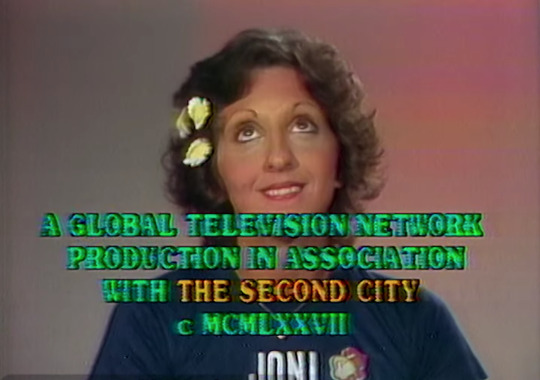
1977.
A Global Television Network Production.
37 notes
·
View notes
Text
Rhys Darby on Hollywood’s Writers Strikes
BY CHLOE DAVISON (July 15, 2023)
Writers turn their pens from scripts to protest signs; The Writers Guild of America (WGA) are striking. Waving signs that read “pay your writers or we’ll spoil Succession” and “I told ChatGPT to write a sign and it sucked,” the WGA are picketing for contracts that guarantee job security and fairer pay. These infamous strikes prevent writers from creating new content, and since entering this strike on May 2nd, Saturday Night Live and Late Night Shows have halted filming. More Hollywood production disruptions are inevitable unless a deal is struck.
I sat down with actor Rhys Darby, who zoomed in from LA, to discuss how the writers strikes might affect us here in Aotearoa. The Auckland-born actor is a true Kiwi success story. Originating in stand-up, and starring in the breakthrough Kiwi comedy series Flight of the Conchords, Darby’s comedy has since infiltrated Hollywood. Starring in the blockbuster Jumanji and queer rom-com Our Flag Means Death alongside Taika Waititi, Darby is making us proud over in Hollywood.
These writers are fighting the good fight, though the quiet question of “what will happen to my telly?” can be heard in hushed tones among audiences. We audiences may resent the disruption to our favourites, but I wonder: why do we rely so much on American productions, do we not have our own media identity? I fear not.
Darby shares in the consensus of support for the WGA: “It’s about fairness in the industry starting at the grassroots level, which is the writers.” He fears without writers, the Kardashians are our standard for good television. “Without the writers, there’s nothing happening. We’re watching Kardashians, no offence against them, but we’re basically going back into reality.”
Darby suggests that the reason we in New Zealand are invested in the writer’s strikes, and why we feel impacted, aligns with the reason for the strikes. WGA have historically striked at times of change in the industry. 2007’s strike allowed writers to generate revenue from internet-distributed media, ‘81 and ‘85 centred around the financial distribution of home video. This time writers are picketing for fair residuals from streaming services.
Darby thinks “the world’s become way smaller than it ever has in the past,” thanks to the internet. “We are all watching the same kind of stuff, thanks to streaming services.” Because of this, there’s no longer a physical barrier between international media, presenting one global stage for which media to be judged. Perhaps streaming services are a modern Silk Road, a shared network. Hollywood’s pinnacle, the Oscars, might just reflect this, having awarded the Oscar for best picture to a non-English film, Parasite, for the first time in 2020.
My question still lies unanswered: Why is New Zealand’s media identity so weak? Why are our consumption habits so Americanised? Darby has the answer. He says, “It’s a real battleground for like— ‘Is this Kiwi or is it actually American what we’re making, how many New Zealanders are in it?’ Well, I can tell ya, there’s a lot of crew that are Kiwi because we’re very good with our crew.” He cites the sitcom Wrecked, “that was an American production, American writers… it was I think 90% New Zealand crew.”
“We’re hard-working people, and we’re utilised a lot, and so people forget about that… they think of writers, they think of actors, but they wouldn’t think of the rest of the industry that are working behind the scenes to make these things happen.”
Micah Winiata, one of these backstage Kiwis, shares similar ideas. He says that “physically being on set you can notice the behavioural differences with crew. In broad strokes, Kiwis get stuck in and do the job and complain less, and Americans (typically) like productions to go through unions, following the rules to the tee.”
When speaking with Rhys, his wife, producer and publicist Rosie Carnahan, interjects from offscreen, “I was just gonna say they need to continue to be competitive with filming rebates as well.” Rhys replies, “so we need to be more competitive with filming rebates to attract productions to our country. I came up with that, not my wife.”
The New Zealand Screen Production Grant (NZSPG) grants international productions in New Zealand a cash rebate of up to 20% of production costs. This rebate, though not as competitive as other nations, does serve to attract productions to New Zealand, and may account for the significant Hollywood presence in New Zealand, yet no national media identity.
Economically, New Zealand differs heavily from Hollywood in terms of funding. New Zealand media entities are overwhelmingly government-funded; this has pros and cons. Winiata is for it, saying “New Zealand can fund and create films which may not even have any international commercial value, but are culturally valuable for the nation unlike America, where it is solely profit driven; if there is a market and an audience there is money to be made. The structure of this funding means we can create taonga for future generations to come.” Winiata values this taonga, reflected in his own work such as TIAOI (2021), a silent documentary he produced, and set in his hometown of Tauranga Moana.
However, by building a national media identity on the foundations of government dollars, these dollars are biased, political, and shielded. It’s almost a dangerous premise: where does government media cross the line and become propaganda? Darby thinks that maintaining a cultural bubble is New Zealand’s pitfall, “it’s a competitive world, but it’s really important for us to tell our own stories. And have them relatable… that’s the key, is to have them relatable to the wider world so that it gives them more life.” He cites Apple TV’s 2020 comedy-drama Ted Lasso as an example of cross-cultural appeal and success. “At the end of the day, it just needs to be relatable.”
New Zealand may not be synonymous with Hollywood just yet, but we are far from absent from the big screen. You’ll simply have to stick around for the credits to see us.
source: Tear Away NZ
29 notes
·
View notes
Note
@previous anon: FUCK YOU
Serial Experiments Lain (stylized as serial experiments lain) is a Japanese anime television series created and co-produced by Yasuyuki Ueda, written by Chiaki J. Konaka and directed by Ryūtarō Nakamura. Animated by Triangle Staff and featuring original character designs by Yoshitoshi ABe, the series was broadcast for 13 episodes on TV Tokyo and its affiliates from July to September 1998. The series follows Lain Iwakura, an adolescent girl in suburban Japan, and her relation to the Wired, a global communications network similar to the internet.
Lain features surreal and avant-garde imagery and explores philosophical topics such as reality, identity, and communication.[3] The series incorporates creative influences from computer history, cyberpunk, and conspiracy theory. Critics and fans have praised Lain for its originality, visuals, atmosphere, themes, and its dark depiction of a world fraught with paranoia, social alienation, and reliance on technology considered insightful of 21st century life. It received the Excellence Prize at the Japan Media Arts Festival in 1998.
Contents1 Plot 2 Characters 3 Production 3.1 Writing 3.2 Character design 3.3 Themes 3.4 Apple computers 4 Broadcast and release history 4.1 Episode list 5 Reception 6 Related media 6.1 Art books 6.2 Soundtracks 6.3 Video game 7 See also 8 References 9 Further reading 10 External links
Plot
Lain Iwakura, a junior high school girl, lives in suburban Japan with her middle-class family, consisting of her inexpressive older sister Mika, her emotionally distant mother, and her computer-obsessed father; Lain herself is somewhat awkward, introverted, and socially isolated from most of her school peers. The status-quo of her life becomes upturned by a series of bizarre incidents that start to take place after she learns that girls from her school have received an e-mail from a dead student, Chisa Yomoda, and she pulls out her old computer in order to check for the same message. Lain finds Chisa telling her via email that she is not dead but has merely "abandoned her physical self" and is alive deep within the virtual realm of the Wired itself, where she claims she has found "God" there. From this point, Lain is caught up in a series of cryptic and surreal events that see her delving deeper into the mystery of the network in a narrative that explores themes of consciousness, perception, and the nature of reality.
"The Wired" is a virtual realm that contains and supports the very sum of all human communication and networks, created with the telegraph, televisions, and telephone services, and expanded with the Internet, cyberspace, and subsequent networks. The series assumes that the Wired could be linked to a system that enables unconscious communication between people and machines without physical interface. The storyline introduces such a system with the Schumann resonances, a property of the Earth's magnetic field that theoretically allows for unhindered long-distance communications. If such a link were created, the network would become equivalent to Reality as the general consensus of all perceptions and knowledge. The increasingly thin invisible line between what is real and what is virtual/digital begins to slowly shatter.
Masami Eiri is introduced as the project director on Protocol Seven (the next-generation Internet protocol in the series' time-frame) for major computer company Tachibana General Laboratories. He had secretly included code of his very own creation to give himself absolute control of the Wired through the wireless system described above. He then "uploaded" his own consciousness into the Wired and "died" a few days after, leaving only his physical self behind. These details are unveiled around the middle of the series, but this is the point where the story begins. Masami later explains that Lain is the artifact by which the wall between the virtual and material worlds is to fall, and that he needs her to go into the Wired and "abandon the flesh", as he did, to achieve his plan. The series sees him trying to convince her through interventions, using the promise of unconditional love, romantic seduction and charm, and even, when all else fails, threats and force.
In the meantime, the anime follows a complex game of hide-and-seek between the "Knights of the Eastern Calculus" (based on the Knights of the Lambda Calculus), hackers whom Masami claims are "believers that enable him to be a God in the Wired", and Tachibana General Laboratories, who try to regain control of Protocol Seven. In the end, the viewer sees Lain realizing, after much introspection, that she has absolute control over everyone's mind and over reality itself. Her dialogue with different versions of herself shows how she feels shunned from the material world, and how she is afraid to live in the Wired, where she has the possibilities and responsibilities of an almighty goddess. The last scenes feature her erasing everything connected to herself from everyone else's memories of her and everything else that has happened since the premiere. She is last seen, unchanged, encountering her oldest and closest friend Alice once again, who is now married. Lain promises herself that she and Alice will surely meet again anytime as Lain can literally go and be anywhere she desires between both worlds.
Characters
Lain Iwakura (岩倉 玲音, Iwakura Rein)
Voiced by: Kaori Shimizu (Japanese); Bridget Hoffman4
The titular character of the series. Lain is a fourteen-year-old girl who uncovers her true nature through the series. She is first depicted as a shy junior high school student with few friends or interests. She later grows multiple bolder personalities, both in the physical world and the Wired, and starts making more friends. As the series progresses, she eventually comes to discover that she is, in reality, merely an autonomous, sentient computer program in the physical and corporeal form of a human being, designed to sever the invisible barrier between the Wired and the real world. In the end, Lain is challenged to accept herself as a de facto goddess for the Wired, having become an omnipotent and omnipresent virtual being with worshippers of her own, as well as an ability to exist beyond the borders of devices, time, or space.
Masami Eiri (英利 政美, Eiri Masami)
Voiced by: Shō Hayami (Japanese); Kirk Thornton4
The key designer of Protocol Seven. While working for Tachibana General Laboratories, he illicitly included codes enabling him to control the whole protocol at will and embedded his own mind and will into the seventh protocol. Because of this, he was fired by Tachibana General Laboratories, and was found dead not long after. He believes that the only way for humans to evolve even further and develop even greater abilities is to absolve themselves of their physical and human limitations, and to live as virtual entities—or avatars—in the Wired for eternity. He claims to have been Lain's creator all along, but was in truth standing in for another as an acting god, who was waiting for the Wired to reach its more evolved current state: Lain herself.
According to another Lain, however, he has never truly existed all along and would not have had any self-obsessed ideas about being God if he had.
Yasuo Iwakura (岩倉 康男, Iwakura Yasuo)
Voiced by: Ryūsuke Ōbayashi (Japanese); Barry Stigler4
Lain's father. Passionate about computers and electronic communication, he works with Masami Eiri at Tachibana General Laboratories. He subtly pushes Lain, his "youngest daughter", towards the Wired and monitors her development until she becomes more and more aware of herself and of her raison d'être. He eventually leaves Lain, telling her that although he did not enjoy playing house, he genuinely loved and cared for her as a real father would. Despite Yasuo's eagerness to lure Lain into the Wired, he warns her not to get overly involved in it or to confuse it with the real world.
Miho Iwakura (岩倉 美穂, Iwakura Miho)
Voiced by: Rei Igarashi (Japanese); Dari Lallou Mackenzie4
Lain's mother. Although she dotes on her husband, she is indifferent towards both her kids. Like her husband, she ends up leaving Lain. She is a computer scientist.
Alice Mizuki (瑞城 ありす, Mizuki Arisu)
Voiced by: Yōko Asada (Japanese); Emily Brown4
Lain's classmate and only true friend throughout the series. She is very sincere and has no discernable quirks. She is the first to attempt to help Lain socialize; she takes her out to a nightclub. From then on, she tries her best to look after Lain. Alice, along with her two best friends Julie and Reika, were taken by Chiaki Konaka from his previous work, Alice in Cyberland.
Mika Iwakura (岩倉 美香, Iwakura Mika)
Voiced by: Ayako Kawasumi (Japanese); Patricia Ja Lee4
Lain's older sister, an apathetic sixteen-year-old high school student. She seems to enjoy mocking Lain's behavior and interests. Mika is considered by Anime Revolution to be the only normal member of Lain's family:[5] she sees her boyfriend in love hotels, is on a diet, and shops in Shibuya. At a certain point in the series, she becomes heavily traumatized by violent hallucinations; while Lain begins freely delving into the Wired, Mika is taken there by her proximity to Lain, and she gets stuck between the real world and the Wired.[6]
Taro (タロウ, Tarō)
Voiced by: Keito Takimoto (Japanese); Brianne Siddall4
A young boy of about Lain's age. He occasionally works for the Knights to bring forth "the one truth". Despite this, he has not yet been made a member, and knows nothing of their true intentions. Taro loves VR games and hangs out all day at Cyberia with his friends, Myu-Myu and Masayuki. He uses special technology, such as custom Handi Navi and video goggles. Taro takes pride in his internet anonymity, and he asks Lain for a date with her Wired self in exchange for information.
Office Worker
Voiced by: Shigeru Chiba
A top executive from Tachibana General Laboratories. He has a personal agenda, which he carries out with the help of the Men in Black. He looks forward to the arrival of a real God through the Wired, and is the man behind the Knights' mass assassination. There are many things he does not know about Lain, but he would rather ask questions about her than disclose his agenda.
Men in Black
Karl Haushoffer (カール・ハウスホッファ, Kāru Hausuhoffa), Voiced by: Jouji Nakata
Lin Suixi (Chinese: 林随錫; pinyin: Lín Suíxī), Voiced by: Takumi Yamazaki
The Men in Black work for the above "Office Worker" in tracking down and murdering all of the members of the Knights. They are not told the true plan, but they know that Masami Eiri is somehow involved, despite having been "killed." They see no need for an almighty, all-powerful God—let alone Lain—in the Wired.
Chisa Yomoda (四方田 千砂, Yomoda Chisa)
Voiced by: Sumi Mutoh (Japanese); Lia Sargent4
A teenage girl who committed suicide at the beginning of the series. After her death, she e-mails Lain, Julie, and a few other kids, saying that she is still alive in the Wired, leading to the series events.
Reika Yamamoto (山本 麗華, Yamamoto Reika)
Voiced by: Chiharu Tezuka (Japanese); Lenore Zann4
One of Alice's friends from school. She does not seem to care for Lain, since she harasses her quite a lot. She is more serious than Julie, and also somewhat meaner.
Julie Kato (加藤 樹莉, Katō Juri)
Voiced by: Manabi Mizuno (Japanese); Gracie Moore4
Another friend of Alice. She also harasses Lain, but not as severely as Reika does. She is sometimes insensitive to other people's feelings.
Masayuki (マサユキ)
Voiced by: Sora Fujima (Japanese); Dorothy Elias-Fahn (English)
Taro's best friend. He is usually seen hanging out with Taro and Myu-Myu.
Myu-Myu (ミューミュウ, Myūmyuu)
Voiced by: Yuki Yamamoto (Japanese); Sandy Fox (English)
A young girl who hangs out with Taro and Masayuki at Cyberia Café. She has feelings for Taro, so she gets jealous when he flirts with Lain.
Narrator
Voiced by: Takashi Taniguchi (Japanese); Paul St. Peter (English)
Production
Serial Experiments Lain was conceived, as a series, to be original to the point of it being considered "an enormous risk" by its producer Yasuyuki Ueda.[7]
Producer Ueda had to answer repeated queries about a statement made in an Animerica interview.[6][8][9] The controversial statement said Lain was "a sort of cultural war against American culture and the American sense of values we [Japan] adopted after World War II".[10] He later explained in numerous interviews that he created Lain with a set of values he took as distinctly Japanese; he hoped Americans would not understand the series as the Japanese would. This would lead to a "war of ideas" over the meaning of the anime, hopefully culminating in new communication between the two cultures. When he discovered that the American audience held the same views on the series as the Japanese, he was disappointed.[9]
The Lain franchise was originally conceived to connect across forms of media (anime, video games, manga). Producer Yasuyuki Ueda said in an interview, "the approach I took for this project was to communicate the essence of the work by the total sum of many media products". The scenario for the video game was written first, and the video game was produced at the same time as the anime series, though the series was released first. A dōjinshi titled "The Nightmare of Fabrication" was produced by Yoshitoshi ABe and released in Japanese in the artbook An Omnipresence in Wired. Ueda and Konaka declared in an interview that the idea of a multimedia project was not unusual in Japan, as opposed to the contents of Lain, and the way they are exposed.[11]
Writing
The authors were asked in interviews if they had been influenced by Neon Genesis Evangelion, in the themes and graphic design. This was strictly denied by writer Chiaki J. Konaka in an interview, arguing that he had not even seen Evangelion until he finished the fourth episode of Lain. Being primarily a horror movie writer, his stated influences are Godard (especially for using typography on screen), The Exorcist, Hell House, and Dan Curtis's House of Dark Shadows. Alice's name, like the names of her two friends Julie and Reika, came from a previous production from Konaka, Alice in Cyberland, which in turn was largely influenced by Alice in Wonderland. As the series developed, Konaka was "surprised" by how close Alice's character became to the original Wonderland character.[12]
A young girl in a white shift sits with her back to us in the dark, focusing her attention on many glowing computer screens which surround her.
Lain's custom computer features holographic displays and liquid carbon dioxide cooling.
Vannevar Bush (and memex), John C. Lilly, Timothy Leary and his eight-circuit model of consciousness, Ted Nelson and Project Xanadu are cited as precursors to the Wired.[11] Douglas Rushkoff and his book Cyberia were originally to be cited as such,[6] and in Lain Cyberia became the name of a nightclub populated with hackers and techno-punk teenagers. Likewise, the series' deus ex machina lies in the conjunction of the Schumann resonances and Jung's collective unconscious (the authors chose this term over Kabbalah and Akashic Record).[10] Majestic 12 and the Roswell UFO incident are used as examples of how a hoax might still affect history, even after having been exposed as such, by creating sub-cultures.[10] This links again to Vannevar Bush, the alleged "brains" of MJ12. Two of the literary references in Lain are quoted through Lain's father: he first logs onto a website with the password "Think Bule Count One Tow" [sic] ("Think Blue, Count Two" is an Instrumentality of Man story featuring virtual persons projected as real ones in people's minds);[13] and his saying that "madeleines would be good with the tea" in the last episode makes Lain "perhaps the only cartoon to allude to Proust".
[14][15]
Character design
A young girl in a white shift kneels facing us with scissors in her hand, and hanks of her own hair on the ground, leaving one forelock uncut. The background is blue.
ABe came up with Lain's hair by imagining Lain cutting it herself and making a ponytail of what was left.[8] This was later included in his An Omnipresence in Wired artbook.[16]
Yoshitoshi ABe confesses to have never read manga as a child, as it was "off-limits" in his household.[17] His major influences are "nature and everything around him".[6] Specifically speaking about Lain's character, ABe was inspired by Kenji Tsuruta, Akihiro Yamada, Range Murata and Yukinobu Hoshino.[8] In a broader view, he has been influenced in his style and technique by Japanese artists Kyosuke Chinai and Toshio Tabuchi.[6]
The character design of Lain was not ABe's sole responsibility. Her distinctive left forelock for instance was a demand from Yasuyuki Ueda. The goal was to produce asymmetry to reflect Lain's unstable and disconcerting nature.[18] It was designed as a mystical symbol, as it is supposed to prevent voices and spirits from being heard by the left ear.[8] The bear pajamas she wears were a demand from character animation director Takahiro Kishida. Though bears are a trademark of the Konaka brothers, Chiaki Konaka first opposed the idea.[12] Director Nakamura then explained how the bear motif could be used as a shield for confrontations with her family. It is a key element of the design of the shy "real world" Lain (see "mental illness" under Themes).[12] When she first goes to the Cyberia nightclub, she wears a bear hat for similar reasons.[18] Retrospectively, Konaka said that Lain's pajamas became a major factor in drawing fans of moe characterization to the series, and remarked that "such items may also be important when making anime".[12]
ABe's original design was generally more complicated than what finally appeared on screen. As an example, the X-shaped hairclip was to be an interlocking pattern of gold links. The links would open with a snap, or rotate around an axis until the moment the " X " became a " = ". This was not used as there is no scene where Lain takes her hairclip off.[19]
Themes
Serial Experiments Lain is not a conventionally linear story, being described as "an alternative anime, with modern themes and realization".[20] Themes range from theological to psychological and are dealt with in a number of ways: from classical dialogue to image-only introspection, passing by direct interrogation of imaginary characters.
Communication, in its wider sense, is one of the main themes of the series,[21] not only as opposed to loneliness, but also as a subject in itself. Writer Konaka said he wanted to directly "communicate human feelings". Director Nakamura wanted to show the audience — and particularly viewers between 14 and 15—"the multidimensional wavelength of the existential self: the relationship between self and the world".[11]
Loneliness, if only as representing a lack of communication, is recurrent through Lain.[22] Lain herself (according to Anime Jump) is "almost painfully introverted with no friends to speak of at school, a snotty, condescending sister, a strangely apathetic mother, and a father who seems to want to care but is just too damn busy to give her much of his time".[23] Friendships turn on the first rumor;[22][24] and the only insert song of the series is named Kodoku no shigunaru, literally "signal of loneliness".[25]
A series of drawings depicting the different personalities of Lain—the first shows shy body language, the second shows bolder body language, and the third grins in an unhinged fashion.
The different personalities of Lain have their names written using different scripts.
Mental illness, especially dissociative identity disorder, is a significant theme in Lain:[19] the main character is constantly confronted with alter-egos, to the point where writer Chiaki Konaka and Lain's voice actress Kaori Shimizu had to agree on subdividing the character's dialogues between three different orthographs.[19] The three names designate distinct "versions" of Lain: the real-world, "childish" Lain has a shy attitude and bear pajamas. The "advanced" Lain, her Wired personality, is bold and questioning. Finally, the "evil" Lain is sly and devious, and does everything she can to harm Lain or the ones close to her.[12] As a writing convention, the authors spelled their respective names in kanji, katakana, and roman characters (see picture).[26]
Reality never has the pretense of objectivity in Lain.[27] Acceptations of the term are battling throughout the series, such as the "natural" reality, defined through normal dialogue between individuals; the material reality; and the tyrannic reality, enforced by one person onto the minds of others.[22] A key debate to all interpretations of the series is to decide whether matter flows from thought, or the opposite.[22][28] The production staff carefully avoided "the so-called God's Eye Viewpoint" to make clear the "limited field of vision" of the world of Lain.[27]
Theology plays its part in the development of the story too. Lain has been viewed as a questioning of the possibility of an infinite spirit in a finite body.[29] From self-realization as a goddess to deicide,[14] religion (the title of a layer) is an inherent part of Lain's background.[29]
Apple computers
Lain contains extensive references to Apple computers, as the brand was used at the time by most of the creative staff, such as writers, producers, and the graphical team.[12] As an example, the title at the beginning of each episode is announced by the Apple computer speech synthesis program PlainTalk, using the voice "Whisper", e.g. say -v Whisper "Weird: Layer zero one". Tachibana Industries, the company that creates the NAVI computers, is a reference to Apple computers: the tachibana orange is a Japanese variety of mandarin orange. NAVI is the abbreviation of Knowledge Navigator, and the HandiNAVI is based on the Apple Newton, one of the world's first PDAs. The NAVIs are seen to run "Copland OS Enterprise" (this reference to Copland was an initiative of Konaka, a declared Apple fan),[12] and Lain's and Alice's NAVIs closely resembles the Twentieth Anniversary Macintosh and the iMac respectively. The HandiNAVI programming language, as seen on the seventh episode, is a dialect of Lisp; the Newton also used a Lisp dialect (NewtonScript). The program being typed by Lain can be found in the CMU AI repository;[30] it is a simple implementation of Conway's Game of Life in Common Lisp.
During a series of disconnected images, an iMac and the Think Different advertising slogan appears for a short time, while the Whisper voice says it.[31] This was an unsolicited insertion from the graphic team, also Mac-enthusiasts.[12] Other subtle allusions can be found: "Close the world, Open the nExt" is the slogan for the Serial Experiments Lain video game. NeXT was the company that produced NeXTSTEP, which later evolved into Mac OS X after Apple bought NeXT. Another example is "To Be Continued." at the end of episodes 1–12, with a blue "B" and a red "e" on "Be"; this matches the original logo of Be Inc., a company founded by ex-Apple employees and NeXT's main competitor in its time.[32]
Broadcast and release history
Serial Experiments Lain was first aired on TV Tokyo and its affiliates on July 6, 1998, and concluded on September 28, 1998, with the thirteenth and final episode. The series consists of 13 episodes (referred to in the series as "Layers") of 24 minutes each, except for the sixth episode, Kids (23 minutes 14 seconds). In Japan, the episodes were released in LD, VHS, and DVD with a total of five volumes. A DVD compilation named "Serial Experiments Lain DVD-BOX Яesurrection" was released along with a promo DVD called "LPR-309" in 2000.[33] As this box set is now discontinued, a rerelease was made in 2005 called "Serial Experiments Lain TV-BOX". A 4-volume DVD box set was released in the US by Pioneer/Geneon. A Blu-ray release of the anime was made in December 2009 called "Serial Experiments Lain Blu-ray Box| RESTORE".[34][35][36][37] The anime series returned to US television on October 15, 2012, on the Funimation Channel.[38] The series' opening theme, "Duvet", was written and performed by Jasmine Rodgers and the British band Bôa. The ending theme, "Distant Scream" (遠い叫び, Tōi Sakebi), was written and composed by Reichi Nakaido.
The anime series was licensed in North America by Pioneer Entertainment (later Geneon USA) on VHS and DVD in 1999. However, the company closed its USA division in December 2007 and the series went out-of-print as a result.[39] However, at Anime Expo 2010, North American distributor Funimation announced that it had obtained the license to the series and re-released it in 2012.[40]
Episode list
No. Title Directed by Original air date
1 "Weird" Ryūtarō Nakamura July 6, 1998
A high school girl commits suicide by jumping off a rooftop late at night. A week later, students are getting emails from the girl, named Chisa Yomoda, which claim that she only gave up her body, but is actually still alive inside the virtual world known as the Wired, saying that there is a God that exists there. After getting one of these emails, introverted fourteen-year-old Lain Iwakura becomes much more interested in computers and asks her techie father, Yasuo Iwakura, for a new NAVI computer system. When she returns to school the following day, the blackboard writes a subliminal message, inviting her to come to the Wired as soon as she can, revealed to be written by Chisa herself.
2 "Girls" Ryūtarō Nakamura July 13, 1998
At Cyberia, a hardcore techno club, a man buys a nanomachine drug called Accela. On the way to school the next day, Alice Mizuki, along with her friends Julie and Reika, tell Lain they saw her during their first visit to Cyberia, but with a far more vigorous and forceful personality. Lain has her father set up her NAVI computer system at home later that evening. After some persuasion, Lain decides to join Alice at Cyberia that night to prove that she was not there before. However, Lain becomes involved with a shooting in the club by the same man under the influence of Accela. She approaches the man, saying that everyone is connected in the Wired no matter where they are. This leads the man to shoot himself out of psychological shock and trauma.
3 "Psyche" Jōhei Matsuura July 20, 1998
The following day, Lain is scolded by her cold mother, Miho Iwakura, for waking up too late. When she leaves the house, she believes she is being spied on when she sees a black car parked near her house. Furthermore, she hears a voice calling out to her when she enters the train, telling her that she is not alone. Her life is thrown into further disarray when she is anonymously sent a mysterious computer chip. She asks her father what it is, but he says he does not know. When she goes to see Taro, with his friends Myu-Myu and Masayuki, at Cyberia, he recalls seeing Lain on the Wired once, noting her Wired personality being the complete opposite of her restrained real world personality. Mika Iwakura, Lain's older sister, comes home the next day, only to see Lain not acting herself as she starts to modify and upgrade her NAVI computer system.
4 "Religion" Akihiko Nishiyama July 27, 1998
Rumors are flying around school and on the Wired in regards to numerous senior students of various high schools committing suicide, with each of the deceased being addicted to the online action game known as PHANTOMa. Interested, Lain investigates only to discover that the game was glitched with a tag game for kids, in which a little girl scares the students to their deaths. Moreover, she finds out that the deaths were most likely caused by the elite secretive hacker group known as the Knights of the Eastern Calculus. Later at night, she senses the Men in Black, who had been spying on her earlier. When she tells the two to go away, a sound wave penetrates through her window, causing the two to fall back and drive away in their black car.
5 "Distortion" Masahiko Murata August 3, 1998
Amidst the events surrounding Tokyo having its traffic information transmission system hacked to cause deliberate accidents, Lain experiences a series of hallucinations that teach her the nature of the Wired in relation to the real world, by means of inanimate objects in her room and eventually her parents. In the meantime, Mika is driven to terror from the Knights repeatedly communicating in unusual ways for her to "fulfill the prophecy."
6 "KIDS" Ryūtarō Nakamura August 10, 1998
At night, when Yasuo checks on Lain, he sees a dramatic change in her room arrangement and the upgrades on her NAVI computer system, which worries him. As Lain hangs out with Alice, along with Julie and Reika, in the district, she notices that children are looking up into the sky and raising their arms, only to realize that they are looking at an image of herself that appears in the sky. Lain searches for the reason behind the strange happenings and finds Professor Hodgeson, the creator of KIDS, an experiment that started fifteen years ago that tried to gather psi energy from children and store it, though the result of the project destroyed the children. Now it seems that the Knights have gotten hold of the project's schematics. When the Men in Black return, Lain goes outside to see them. The coolant system in her room bursts, leading the Men in Black to confirm that the Knights planted a parasite bomb there.
7 "SOCIETY" Jōhei Matsuura August 17, 1998
As Lain gets more and more involved in the Wired world, albeit at home and at school, Alice starts to worry about her closing up again. It is reported that the Knights cracked the firewall of the information control center of the Wired. As the activity of the Knights begins to surface, the network is in search for Lain. The Men in Black ask Lain to follow them to an office in the Tachibana General Laboratories, where the Office Worker in charge of the Men in Black, after her help of fixing his computer, shows Lain a projection of herself in the Wired taking out one of the members of the Knights. After the Office Worker deduces that Lain in the real world and in the Wired are one and the same, he questions her about her origins. However, she breaks down for not knowing, altering her timid personality to that of a more serious one before she shoves her way out of the room.
8 "RUMORS" Shigeru Ueda August 24,��1998
Lain's family has been acting weird lately, much to her surprise. Upon further investigation, Lain disbelieves that she is omnipresent in the Wired, while she is merely a body, more or less a projection of herself, in the real world. A rumor is spread in the Wired about Alice having sexual fantasies about a male teacher, and a second one says that Lain has spread the first. To cope with the distress of rejection, Lain acts directly on reality for the first time, finding out that she can "delete" the event of the rumors. A lookalike duplicate of herself with its own distinct personality starts appearing more frequently, which leads her to question her own existence.
9 "PROTOCOL" Akihiko Nishiyama August 31, 1998
Throughout the episode, background information is being shown from "archives". Information regarding the Roswell UFO incident, the Majestic 12, which was formed by President Harry S. Truman, engineer Vannevar Bush, who developed what is called memex, physician John C. Lilly, who conducted experiments with dolphin communication, pioneer Ted Nelson, who founded Project Xanadu, and the Schumann resonances are all mentioned, explaining how the human consciousness can be communicated through a network without the use of a device. It is also noted that a man named Masami Eiri has suddenly committed suicide. During that time, Lain gets a computer microchip from J.J., the disc jockey from Cyberia. She then asks Taro on a "date" and takes him to her home, where she asks him about the microchip. After becoming frightened, he admits it is a computer code made to disrupt human memory, and it was made by the Knights. Although he defends them, he admits not knowing much about them. He later kisses Lain before leaving.
10 "LOVE" Masahiko Murata September 7, 1998
As both are seen to have switched bodies, Eiri introduces himself to Lain as the creator of Protocol Seven, saying that Lain no longer needs to have a body in order to be alive. As she, back in her own body, comes home, Yasuo says his farewell after realizing she knows the truth behind her existence. Eiri is considered the God of the Wired because he explained that he is worshiped by the Knights. Knowing this, Lain deals with the Knights once and for all by leaking a list of all of its members onto the Wired, leaving a trail of murder by the Men in Black and suicide in its wake. Even with the Knights gone, Eiri still claims he is the God of the Wired, since he says that the real Lain exists in the Wired, not the real world.
11 "Infornography" Jōhei Matsuura September 14, 1998
Lain lies exhausted in her room, and wakes up to find herself all wrapped in electrical cords. After a really long and complicated memory flashback, seen throughout the series, Eiri appears in her room and congratulates her, for having succeeded in downloading her NAVI into her own brain to see and hear all that is happening. However, he warns her about her "hardware capacity," and that she is merely a sentient and autonomous software computer program with a physical body in the form of a teenage human girl. Lain later appears to Alice in her room to make things right with her again concerning the false rumors. Lain declares that anything is possible now, as devices are no longer needed anymore to enter the Wired freely. The next day, nobody seems to remember the rumored incidents and Lain smiles at Alice's complicity.
12 "Landscape" Ryūtarō Nakamura September 21, 1998
Lain witnesses the frontier between the physical and the Wired worlds finally beginning to collapse. The Men in Black are approached by their Officer Worker, who gives them a final "payment" for their services, telling them to leave town away from any power lines or satellite coverage. After he leaves, both Men in Black suffer death from an image of Lain etched in their retinas. Alice enters Lain's eerie house and goes inside her room. Lain explains that she is actually a computerized program designed to destroy the barrier between the two worlds. Lain is still affixed on the fact that humans no longer need a physical body to stay alive, but Alice shows that her heartbeat proves otherwise. Suddenly, Eiri, first unseen to Alice, appears behind Lain, assuming she needs to be "debugged". Lain argues that Eiri was just an "acting god", for she is the true Goddess of the Wired. Eiri retaliates by transforming into a monstrous form to attain the vastly limitless power and strength that she possesses, but Lain manages to crush Eiri with her electrical equipment, wiping him out for good.
13 "Ego" Ryūtarō Nakamura September 28, 1998
Lain's attempts to protect her from Eiri's attack result in traumatizing Alice, Lain's only true friend; in order to fix this, Lain decides to do a "factory reset" on her life, deleting herself from everyone's memory. Distraught from doing so, Lain is determined to discover her true form and identity and takes radical action. She is confronted by her separate bolder self of the Wired, who reminds her that the Wired is not an upper layer of the real world. Her bolder Wired self then assures her that she is the true Goddess of the Wired, saying she is an omnipotent and omnipresent virtual being that can go and be anywhere she desires and merely watch the real world from afar. After causing her bolder self to disappear, Lain sees her father. Alice, now older with a spouse, spots Lain standing on an overpass, having some déjà vu about Lain but not recognizing who she is. Alice says goodbye and that she may run into Lain again someday. Lain asserts that this is true, since she is everywhere at once.
Reception
A suburban scene on a sunny day, showing houses and telegraph poles, but the shadows contain unnatural red splotches.
Lain's neighborhood. The "blood pools" represent the Wired's presence "beneath the surface" of reality.[6]
Serial Experiments Lain was first broadcast in Tokyo at 1:15 a.m. JST. The word "weird" appears almost systematically in English language reviews of the series,[23][41][42][43][44] or the alternatives "bizarre",[45] and "atypical",[46] due mostly to the freedoms taken with the animation and its unusual science fiction themes, and due to its philosophical and psychological context. Critics responded positively to these thematic and stylistic characteristics, and it was awarded an Excellence Prize by the 1998 Japan Media Arts Festival for "its willingness to question the meaning of contemporary life" and the "extraordinarily philosophical and deep questions" it asks.[47]
According to Christian Nutt from Newtype USA, the main attraction to the series is its keen view on "the interlocking problems of identity and technology". Nutt saluted Abe's "crisp, clean character design" and the "perfect soundtrack" in his 2005 review of series, saying that "Serial Experiments Lain might not yet be considered a true classic, but it's a fascinating evolutionary leap that helped change the future of anime."[48] Anime Jump gave it 4.5/5,[23] and Anime on DVD gave it A+ on all criteria for volume 1 and 2, and a mix of A and A+ for volume 3 and 4.[42] Lain was subject to commentary in the literary and academic worlds. The Asian Horror Encyclopedia calls it "an outstanding psycho-horror anime about the psychic and spiritual influence of the Internet".[49] It notes that the red spots present in all the shadows look like blood pools (see picture). It notes the death of a girl in a train accident is "a source of much ghost lore in the twentieth century", more so in Tokyo.
The Anime Essentials anthology by Gilles Poitras describes it as a "complex and somehow existential" anime that "pushed the envelope" of anime diversity in the 1990s, alongside the much better known Neon Genesis Evangelion and Cowboy Bebop.[50] Professor Susan J. Napier, in her 2003 reading to the American Philosophical Society called The Problem of Existence in Japanese Animation (published 2005), compared Serial Experiments Lain to Ghost in the Shell and Hayao Miyazaki's Spirited Away.[51] According to her, the main characters of the two other works cross barriers; they can cross back to our world, but Lain cannot. Napier asks whether there is something to which Lain should return, "between an empty 'real' and a dark 'virtual'".[52] Mike Toole of Anime News Network named Serial Experiments Lain as one of the most important anime of the 1990s.[53]
Despite the positive feedback the television series had received, Anime Academy gave the series a 75%, partly due to the "lifeless" setting it had.[54] Michael Poirier of EX magazine stated that the last three episodes fail to resolve the questions in other DVD volumes.[55] Justin Sevakis of Anime News Network noted that the English dub was decent, but that the show relied so little on dialogue that it hardly mattered.[56]
Related media
Art booksAn Omnipresence In Wired: Hardbound, 128 pages in 96 colors with Japanese text. It features a chapter for each layer (episode) and concept sketches. It also features a short color manga titled "The Nightmare of Fabrication". It was published in 1998 by Triangle Staff/SR-12W/Pioneer LDC. (ISBN 4-7897-1343-1) Yoshitoshi ABe lain illustrations ab# rebuild an omnipresence in Wired: Hardbound, 148 pages. A remake of "An Omnipresence In Wired" with new art, added text by Chiaki J. Konaka, and a section entitled "ABe's EYE in color of things" (a compilation of his photos of the world). It was published in Japan on October 1, 2005, by Wanimagazine (ISBN 4-89829-487-1), and in America as a softcover version translated into English on June 27, 2006, by Digital Manga Publishing (ISBN 1-56970-899-1). Visual Experiments Lain: Paperback, 80 full-color pages with Japanese text. It has details on the creation, design, and storyline of the series. It was published in 1998 by Triangle Staff/Pioneer LDC. (ISBN 4-7897-1342-3) Scenario Experiments Lain: Paperback, 335 pages. By "chiaki j. konaka" (uncapitalized in original). It contains collected scripts with notes and small excerpted storyboards. It was published in 1998 in Japan.(ISBN 4-7897-1320-2)
Soundtracks
The first original soundtrack, Serial Experiments Lain Soundtrack, features music by Reichi Nakaido: the ending theme and part of the television series' score, alongside other songs inspired by the series. The second, Serial Experiments Lain Soundtrack: Cyberia Mix, features electronica songs inspired by the television series, including a remix of the opening theme "Duvet" by DJ Wasei. The third, lain BOOTLEG, consists of the ambient score of the series across forty-five tracks. BOOTLEG also contains a second mixed-mode data and audio disc, containing a clock program and a game, as well as an extended version of the first disc – nearly double the length – across 57 tracks in 128 kbit/s MP3 format, and sound effects from the series in WAV format. Because the word bootleg appears in its title, it is easily confused with the Sonmay counterfeit edition of itself, which only contains the first disc in an edited format. All three soundtrack albums were released by Pioneer Records.
The series' opening theme, "Duvet", was written and performed in English by the British rock band Bôa. The band released the song as a single and as part of the EP Tall Snake, which features both an acoustic version and DJ Wasei's remix from Cyberia Mix.
Video game
Main article: Serial Experiments Lain (video game)
On November 26, 1998, Pioneer LDC released a video game with the same name as the anime for the PlayStation.[57] It was designed by Konaka and Yasuyuki, and made to be a "network simulator" in which the player would navigate to explore Lain's story.[12] The creators themselves did not call it a game, but "Psycho-Stretch-Ware",[12] and it has been described as being a kind of graphic novel: the gameplay is limited to unlocking pieces of information, and then reading/viewing/listening to them, with little or no puzzle needed to unlock.[58] Lain distances itself even more from classical games by the random order in which information is collected.[12] The aim of the authors was to let the player get the feeling that there are myriads of informations that they would have to sort through, and that they would have to do with less than what exists to understand.[12] As with the anime, the creative team's main goal was to let the player "feel" Lain, and "to understand her problems, and to love her".[11] A guidebook to the game called Serial Experiments Lain Official Guide (ISBN 4-07-310083-1) was released the same month by MediaWorks.[59]
See alsoNoosphere
References
"Serial Experiments Lain BD/DVD Box Delayed 4 Months". Anime News Network. Archived from the original on June 28, 2018. Retrieved June 26, 2018.
"FRUiTS October (No.15_1st/Oct./1998)". Cornell Japanese Animation Society. Archived from the original on January 22, 2021. Retrieved October 27, 2019.
Napier, Susan J. (November 2002). "When the Machines Stop: Fantasy, Reality, and Terminal Identity in Neon Genesis Evangelion and Serial Experiments Lain". Science Fiction Studies. 29 (88): 418–435. ISSN 0091-7729. Archived from the original on June 11, 2007. Retrieved May 4, 2007.
"Serial Experiments Lain (1999 TV Show)". Behind The Voice Actors. Archived from the original on January 31, 2022. Retrieved January 31, 2022. A green check mark indicates that a role has been confirmed using a screenshot (or collage of screenshots) of a title's list of voice actors and their respective characters found in its opening and/or closing credits and/or other reliable sources of information.
"[SEL] Character Profiles". Anime Revolution. Archived from the original on March 23, 2007. Retrieved December 30, 2006.
"Otakon Lain Panel Discussion with Yasuyuki Ueda and Yoshitoshi ABe". August 5, 2000. Archived from the original on October 26, 2006. Retrieved September 16, 2006.
Scipion, Johan (March 1, 2003). "Abe Yoshitoshi et Ueda Yasuyuki". AnimeLand (in French). Anime Manga Presse. Archived from the original on September 27, 2007. Retrieved September 16, 2006.
The Anime Colony (August 7, 2000). "Online Lain Chat with Yasuyuki Ueda and Yoshitoshi ABe". Archived from the original on October 24, 2006. Retrieved September 16, 2006.
"Anime Jump!: Lain Men:Yasuyuki Ueda". Archived from the original on August 4, 2008. Retrieved September 26, 2006.
Animerica, (Vol. 7 No. 9, p. 29)
Animerica, (Vol. 7 No. 9, p. 28)
"Serial Experiments Lain". HK Magazine. Hong Kong: Asia City Publishing (14). April 2000. in "HK Interview". Chiaki J. Konaka. Archived from the original on November 24, 2010. Retrieved September 25, 2010. and "HK Interview". Chiaki J. Konaka. Archived from the original on November 1, 2010. Retrieved September 25, 2010.
Serial Experiments Lain, "Layer 01: WEIRD"
"Movie Gazette: "Serial Experiments Lain Volume : Reset" Review". Archived from the original on May 21, 2006. Retrieved October 11, 2006.
Yasuo: "I will bring madeleines next time. They will taste good with the tea." Serial Experiments Lain, Episode 13, "Ego". Lain has just erased herself from her friends' memories, while for Proust the taste of madeleines triggers memories of his childhood.
ABe, Yoshitoshi (1998). "Hair cut 01-04". An Omnipresence In Wired (in Japanese). Pioneer LDC. ISBN 978-4-7897-1343-6.
"Anime Jump!: Lain Men: Yoshitoshi ABe". 2000. Archived from the original on May 10, 2006. Retrieved September 16, 2006.
FRUiTS Magazine No. 15, October 1998.
Manga Max magazine, September 1999, p. 22, "Unreal to Real"
Benkyo! Magazine, March 1999, p.16, "In My Humble Opinion"
"T.H.E.M.Anime Review of Serial Experiments Lain". Archived from the original on October 11, 2006. Retrieved November 24, 2006.
"DVDoutsider Review of Serial Experiments Lain". Archived from the original on March 5, 2012. Retrieved November 24, 2006.
Toole, Mike (October 16, 2003). "Anime Jump!: Serial Experiments Lain Review". Archived from the original on June 10, 2008.
Serial Experiments Lain, Layer 08: RUMORS
"List of Serial Experiments Lain songs". Archived from the original on January 13, 2007. Retrieved December 7, 2006.
ABe, Yoshitoshi (1998). Visual Experiments Lain. Triangle Staff/Pioneer LDC. ISBN 978-4-7897-1342-9., page 42
Manga Max Magazine, September 1999, p. 21, "God's Eye View"
Serial Experiments Lain, Layer 06: KIDS: "your physical body exists only to confirm your existence".
Study on Lain, Buffy, and Attack of the clones by Felicity J. Coleman, lecturer at the University of Melbourne. From the Internet Archive.
"Conway's Game of Life". Carnegie Mellon University. Archived from the original on July 22, 2009. Retrieved June 24, 2009.
Serial Experiments Lain, Layer 11: INFORNOGRAPHY.
"Be, Inc". Archived from the original on November 28, 2003. Retrieved November 27, 2006.
"Serial Experiments Lain – Release". Archived from the original on February 16, 2010. Retrieved September 16, 2009.
"Serial Experiments Lain Blu-ray Box RESTORE". ImageShack. Archived from the original on April 2, 2015. Retrieved April 14, 2015.
"serial experiments lain Blu-ray LABO プロデューサーの制作日記". Archived from the original on December 26, 2010. Retrieved September 16, 2009.
"Playlog.jp Blog". Archived from the original on August 17, 2009. Retrieved October 15, 2009.
"Lain on BD announced – Wakachan Thread". Archived from the original on February 27, 2012. Retrieved October 15, 2009.
"FUNimation Week 43 of 2012". Archived from the original on January 23, 2013.
"Geneon USA To Cancel DVD Sales, Distribution By Friday". Anime News Network. September 26, 2007. Archived from the original on March 28, 2010. Retrieved January 30, 2010.
"Funi Adds Live Action Moyashimon Live Action, More". Anime News Network. July 2, 2010. Archived from the original on July 4, 2010. Retrieved July 3, 2010.
Bitel, Anton. "Movie Gazette: 'Serial Experiments Lain Volume 2: Knights' Review". Movie Gazette. Archived from the original on August 21, 2006. Retrieved September 16, 2006.
Robinson, Tasha. "Sci-Fi Weekly: Serial Experiments Lain Review". Archived from the original on July 20, 2006. Retrieved September 16, 2006.
Beveridge, Chris (July 13, 1999). "Serial Experiments Lain Vol. #1". Mania.com. Archived from the original on April 2, 2015. Retrieved September 16, 2006.
Southworth, Wayne. "The Spinning Image: "Serial Experiments Lain Volume 4: Reset" Review". Archived from the original on September 28, 2007. Retrieved September 16, 2006.
Silver, Aaron. "Anime News Network: Serial Experiments Lain DVD Vol. 1–4 Review". Archived from the original on March 25, 2006. Retrieved September 16, 2006.
Lai, Tony. "DVD.net: "Lain: Volume 1 – Navi" Review". Archived from the original on September 20, 2006. Retrieved September 16, 2006.
Japan Media Arts Plaza (1998). "1998 (2nd) Japan Media Arts Festival: Excellence Prize – serial experiments lain". Archived from the original on April 26, 2007. Retrieved September 16, 2006.From the Internet Archive.
Nutt, Christian (January 2005). "Serial Experiments Lain DVD Box Set: Lost in the Wired". Newtype USA. 4 (1): 179.
Bush, Laurence C. (October 2001). Asian Horror Encyclopedia. Writers Club Press. ISBN 978-0-595-20181-5., page 162.
Poitras, Gilles (December 2001). Anime Essentials. Stone Bridge Press, LLC. ISBN 978-1-880656-53-2., page 28.
Napier, Susan J., Dr. (March 2005). "The Problem of Existence in Japanese Animation". Proceedings of the American Philosophical Society. 149 (1): 72–79. JSTOR 4598910.
Napier 2005, p. 78
Toole, Mike (June 5, 2011). "Evangel-a-like – The Mike Toole Show". Anime News Network. Archived from the original on October 10, 2015. Retrieved November 20, 2015.
"Serial Experiments: Lain". March 16, 2002. Archived from the original on September 27, 2011. Retrieved April 17, 2015.
"Serial Experiments Lain – Buried Treasure". May 11, 2000. Archived from the original on August 26, 2011. Retrieved April 17, 2015.
"Serial Experiments Lain – Buried Treasure". November 20, 2008. Archived from the original on April 3, 2015. Retrieved April 17, 2015.
"Serial Experiments Lain". Archived from the original on January 22, 2021. Retrieved September 25, 2010.
"Games Are Fun: "Review – Serial Experiments Lain – Japan"". April 25, 2003. Archived from the original on September 27, 2011. Retrieved November 10, 2006.シリアルエクスペリメンツレイン公式ガイド [Serial Experiments Lain Official Guide] (in Japanese). ASIN 4073100831.
Further readingBitel, Anton. "Movie Gazette: 'Serial Experiments Lain Volume 3: Deus' Review". Movie Gazette. Archived from the original on May 21, 2006. Retrieved October 11, 2006. Horn, Carl Gustav. "Serial Experiments Lain". Viz Communications. Archived from the original on February 19, 2001. Retrieved September 25, 2010. Moure, Dani. "Serial Experiments Lain Vol. #2". Mania.com. Archived from the original on April 2, 2015. Retrieved September 25, 2010. Moure, Dani. "Serial Experiments Lain Vol. #3". Mania.com. Archived from the original on April 2, 2015. Retrieved September 25, 2010. Napier, Susan J. (2005) Anime from Akira to Howl's Moving Castle: Experiencing Contemporary Japanese Animation ISBN 978-1-4039-7052-7 Prévost, Adèle-Elise; Musebasement (2008)
"Manga: The Signal of Noise" Mechademia 3 pp. 173–188 ISSN 1934-2489 Prindle, Tamae Kobayashi (2015). "Nakamura Ryûtarô's Anime, Serial Experiments, Lain (1998)". Asian Studies. 3 (1): 53–81. doi:10.4312/as.2015.3.1.53-81. ISSN 2350-4226. Sevakis, Justin (November 20, 2008). "Buried Treasure: Serial Experiments Lain". Anime News Network. Retrieved September 25, 2010. Jackson, C. (2012). "Topologies of Identity in Serial Experiments Lain". Mechademia. 7: 191–201. doi:10.1353/mec.2012.0013. S2CID 119423011.
External links
Wikiquote has quotations related to Serial Experiments Lain.
Look up Appendix:Serial Experiments Lain in Wiktionary, the free dictionary.
this is definitely the new weirdest anon ive gotten
91 notes
·
View notes
Video
youtube
Harry Belafonte on His Artistic Values and His Activism
In interviews and articles in The New York Times, Mr. Belafonte, who died on Tuesday, spoke about the civil rights movement and his frustration with how Black life was depicted onscreen.
Harry Belafonte, the singer, actor and activist whose wide-ranging success blazed a trail for other Black artists in the 1950s, died on Tuesday at age 96.
A child of Harlem, Mr. Belafonte used his platform at the height of the entertainment world to speak out frequently on his music, how Black life was depicted onscreen and, most important to him, the civil rights movement. Here are some of the insights Mr. Belafonte provided to The New York Times during his many decades in the public spotlight, as they appeared at the time:
His music
Mr. Belafonte’s string of hits, including “Day-O (The Banana Boat Song)” and “Jamaica Farewell,” helped create an American obsession with Caribbean music that led his record company to promote him as the “King of Calypso.”
But Mr. Belafonte never embraced that sort of monarchical title, rejecting “purism” as a “cover-up for mediocrity” and explaining that he saw his work as a mash-up of musical styles.
He told The New York Times Magazine in 1959 that folk music had “hidden within it a great dramatic sense, and a powerful lyrical sense.” He also plainly conceded: “I don’t have a great voice.”
In 1993, he told The Times that he used his songs “to describe the human condition and to give people some insights into what may be going on globally, from what I’ve experienced.”
Sign up for the Watching newsletter, for Times subscribers only. Streaming TV and movie recommendations from critic Margaret Lyons and friends. Get it in your inbox.
He said that “Day-O,” for instance, was a way of life.
“It’s a song about my father, my mother, my uncles, the men and women who toil in the banana fields, the cane fields of Jamaica,” he said. “It’s a classic work song.”
His views on film and television
Mr. Belafonte’s success in music helped him become a Hollywood leading man. In the 1950s and 1960s, Mr. Belafonte and his friend Sidney Poitier landed more substantive and nuanced roles than Black actors had previously received.
Nonetheless, Mr. Belafonte was left largely unsatisfied.
Writing for The Times in 1968, he complained that “the real beauty, the soul, the integrity of the black community is rarely reflected” on television.
“The medium is dominated by white-supremacy concepts and racist attitudes,” he wrote. “TV excludes the reality of Negro life, with all its grievances, passions and aspirations, because to depict that life would be to indict (or perhaps enrich?) much of what is now white America and its institutions. And neither networks nor sponsors want that.”
Mr. Belafonte emphasized that his 10-year-old son saw few Black heroes on television.
“The nobility in his heritage and the values that could complement his positive growth and sense of manhood are denied him,” he wrote. “Instead, there is everything to tear him down and give him an inferiority complex. He will see the Negro only as a rioter and a social problem, never as a whole human being.”
Roughly 25 years later, Mr. Belafonte was circumspect, suggesting in an interview with The Times that little had changed.
“Even today, on the big screen, the pictures that are always successful are pictures where blacks appear in the way white America buys it,” he said in 1993. “And we’re told that what we really want to express is not profitable and is not commercially viable.”
His politics and activism
Even as Mr. Belafonte was in the prime of his entertainment career, he was intently focused on activism and civil rights.
“Back in 1959,” Mr. Belafonte told The Times in 1981, “I fully believed in the civil-rights movement. I had a personal commitment to it, and I had my personal breakthroughs — I produced the first black TV special; I was the first black to perform at the Waldorf Astoria. I felt if we could just turn the nation around, things would fall into place.”
But Mr. Belafonte lamented that by the middle of the 1970s, the movement had ended.
“When the doors of Hollywood shut on minorities and blacks at the end of the 70’s,” he said, “a lot of black artists had been enjoying the exploitation for 10 years. But one day they found the shop had closed down.”
Mr. Belafonte remained outspoken about politics in his later years. In 2002 he accused Secretary of State Colin L. Powell of abandoning his principles to “come into the house of the master”; he called President George W. Bush a “terrorist” in 2006, and lamented in 2012 that modern celebrities had “turned their back on social responsibility.”
“There’s no evidence that artists are of the same passion and of the same kind of commitment of the artists of my time,” he told The Times in 2016. “The absence of black artists is felt very strongly because the most visible oppression is in the black community.”
In 2016 and again in 2020, he visited the opinion pages of The Times to urge voters to reject Donald J. Trump.
“The vote is perhaps the single most important weapon in our arsenal,” Mr. Belafonte told The Times in the 2016 article. “The same things needed now are the same things needed before,” he added. “Movements don’t die because struggle doesn’t die. ”
41 notes
·
View notes
Text

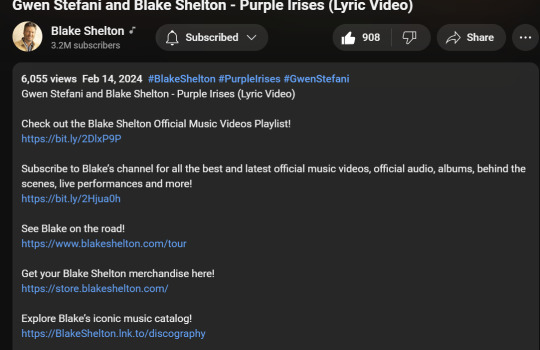
Stay in touch with Blake! Website: http://www.blakeshelton.com/ Facebook: https://www.facebook.com/blakeshelton/ Twitter: https://twitter.com/blakeshelton Instagram: https://www.instagram.com/blakeshelton/ TikTok: https://www.tiktok.com/@blakeshelton?... As the genre’s chief ambassador, Blake Shelton has been delivering country music to a diverse audience for more than 20 years. In that time, he has accumulated an astonishing 28 No. 1 singles, sold nearly 15 million album equivalents, and earned upwards of 11.5 billion global streams. Shelton has received myriad awards, including six ACMs, three AMAs, 10 CMAs, 11 CMTs, and six People’s Choice, and most recently the fan-voted “Social Star” Award on the inaugural People’s Choice Country Awards. A celebrated entertainer, Shelton recently announced his 2024 “Back to the Honky Tonk” Tour which kicks off in February. Last year’s edition earned rave reviews and for the sold-out Tour. As an original coach on the Emmy Award-winning television show The Voice, Shelton brought a steady diet of current and classic country music to the NBC primetime audience. After 23 seasons and nine championships, he stepped away from the show in May. He and Carson Daly have teamed up to executive produce and star in the high-spirited, celebrity game show, Barmageddon. Hosted by Nikki Garcia, the show airs on USA Network and premiered as the network’s highest-rated debut episode in more than three years. Season Two will premiere on November 13. The Grand Ole Opry member also remains focused on his Ole Red partnership with Ryman Hospitality, with locations currently in Tishomingo, Nashville, Gatlinburg, Orlando, and an exciting new venue in Las Vegas that opens in early 2024. A noted humanitarian, Shelton has helped raise millions of dollars for children’s hospitals, disaster relief organizations, food banks, the OK POP Museum, and more in his home state of Oklahoma and beyond. © 2024 Warner Music Nashville LLC
6 notes
·
View notes